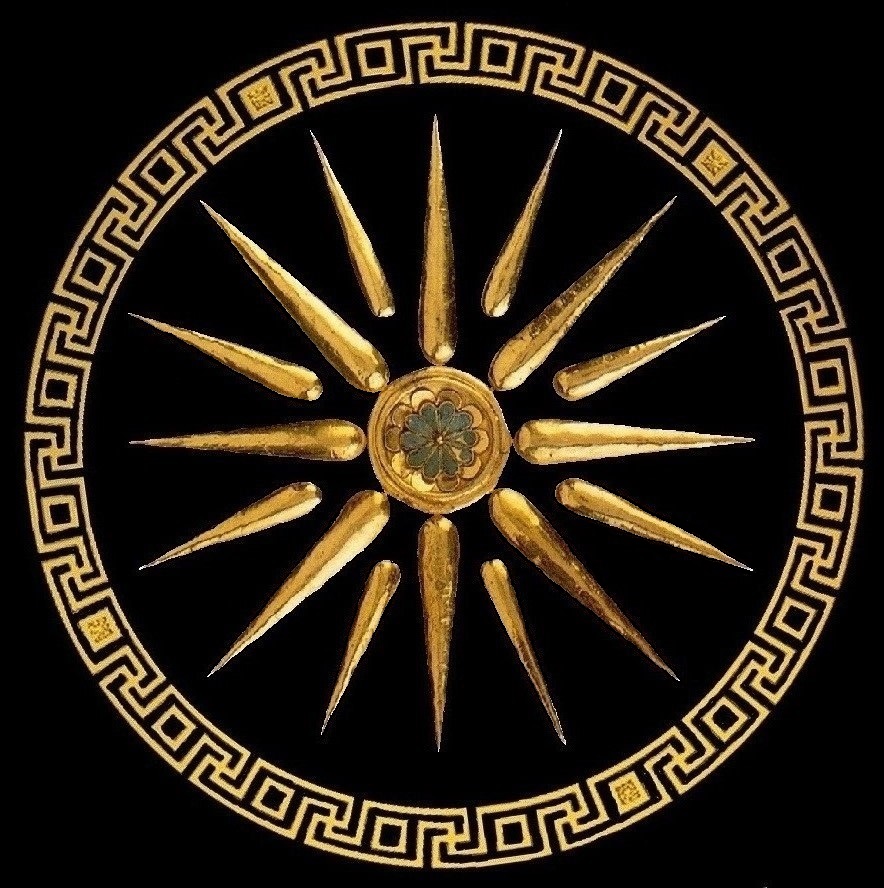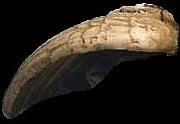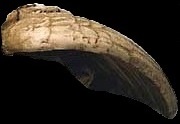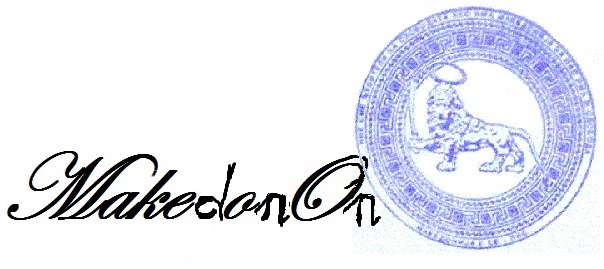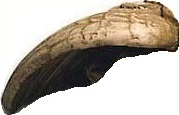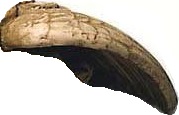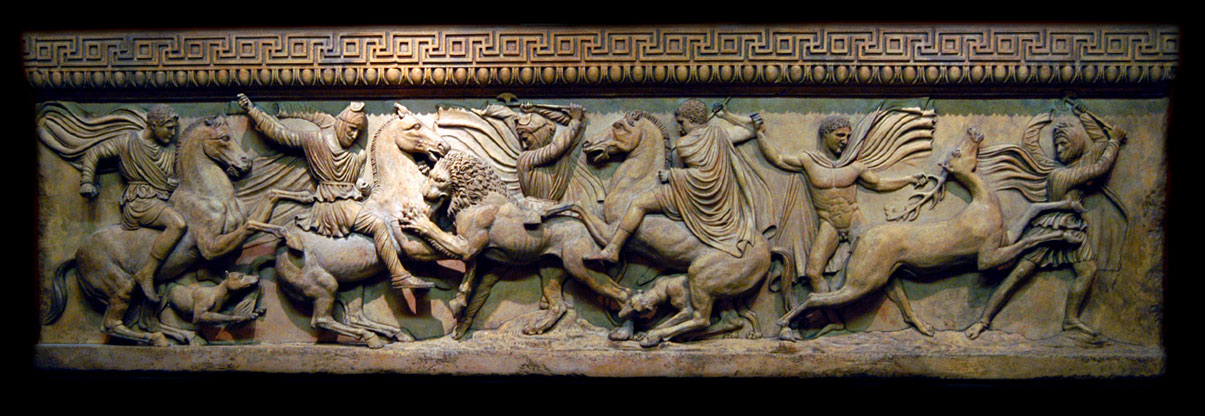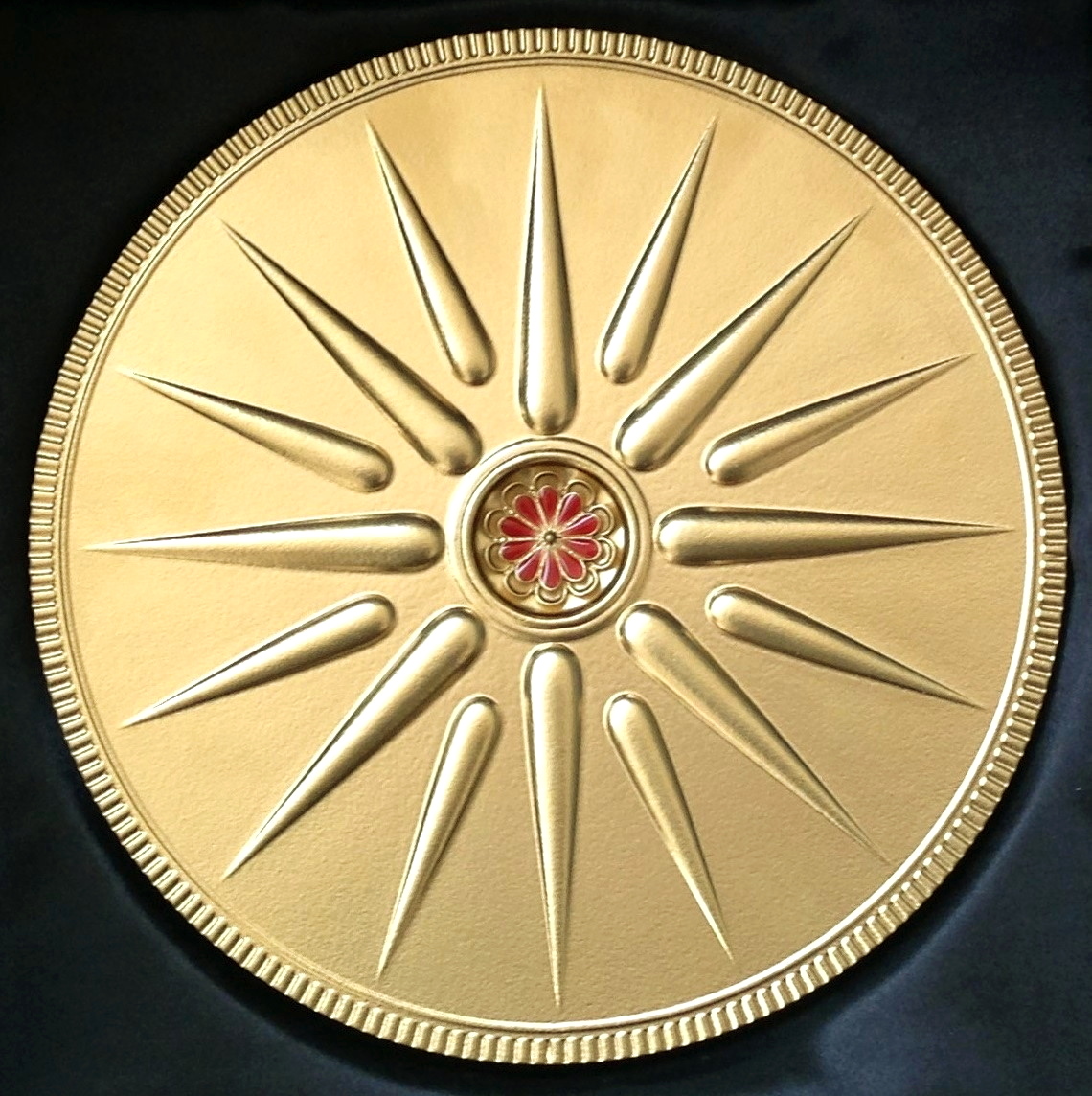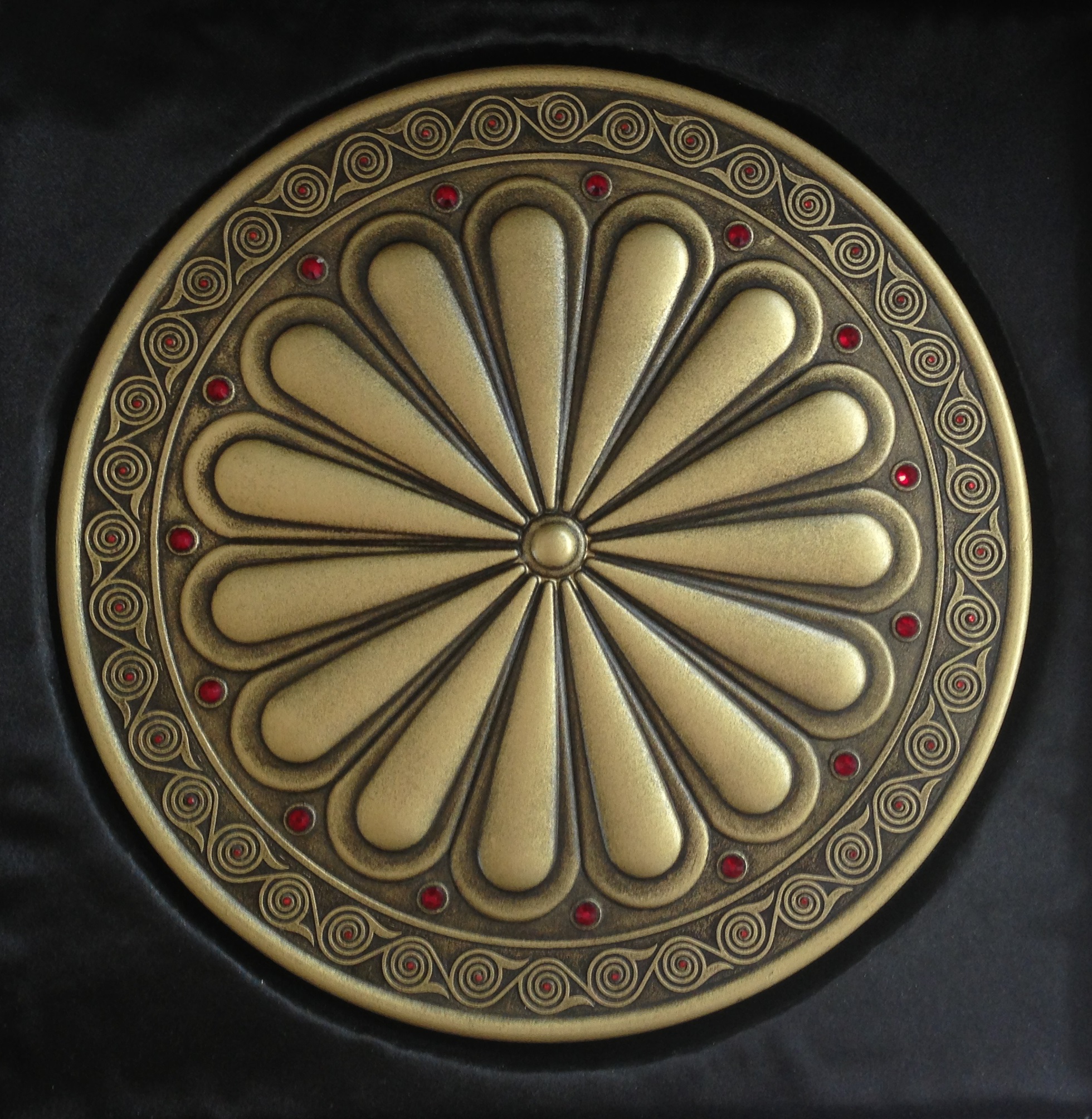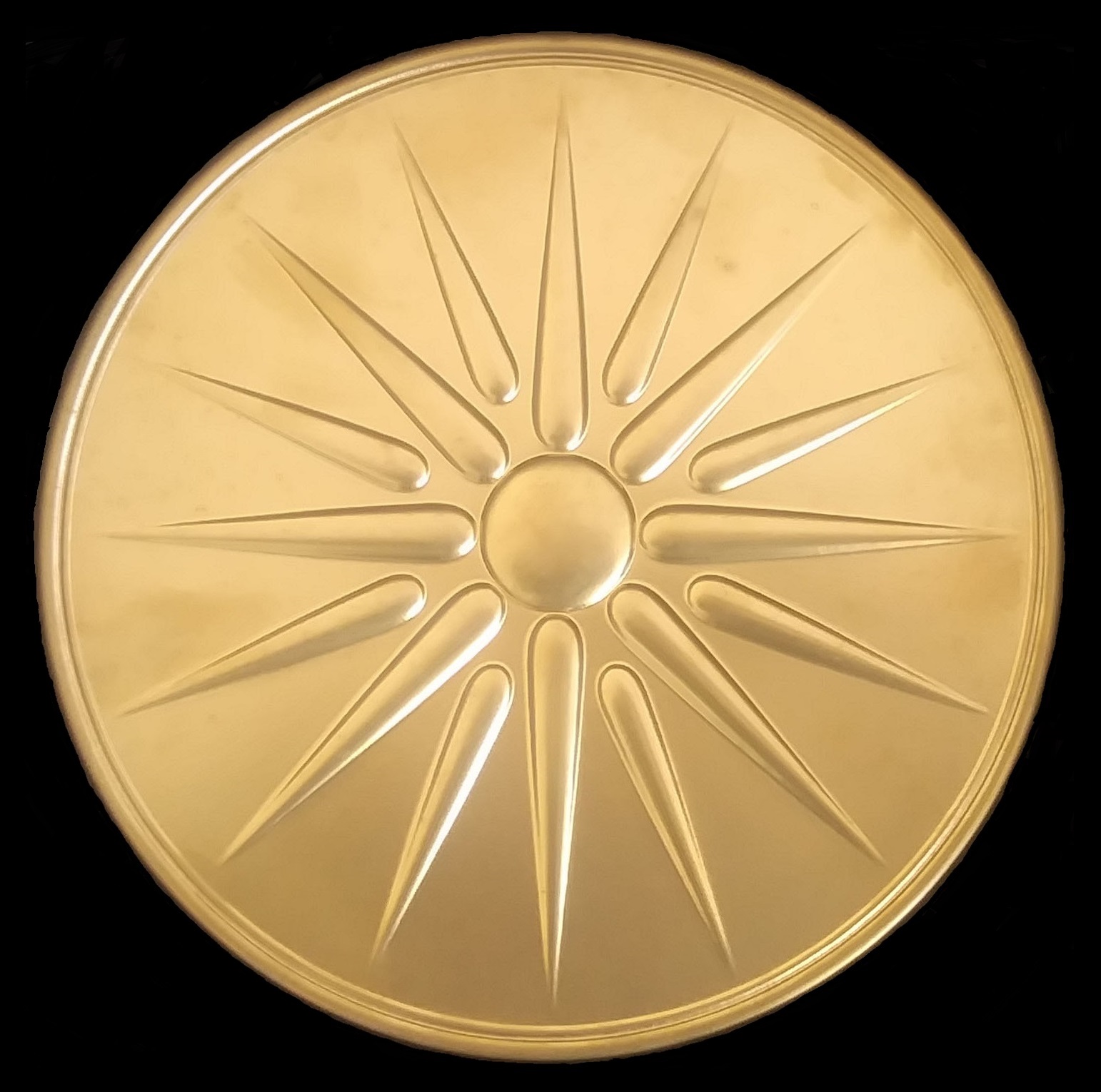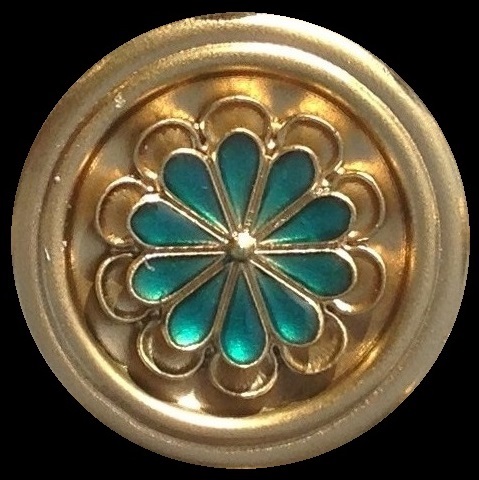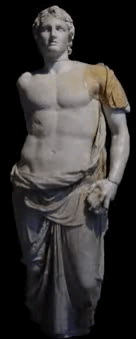|
|
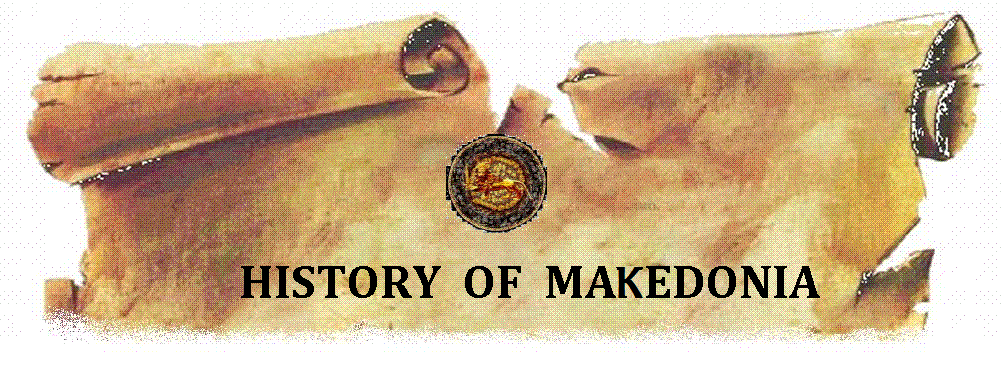
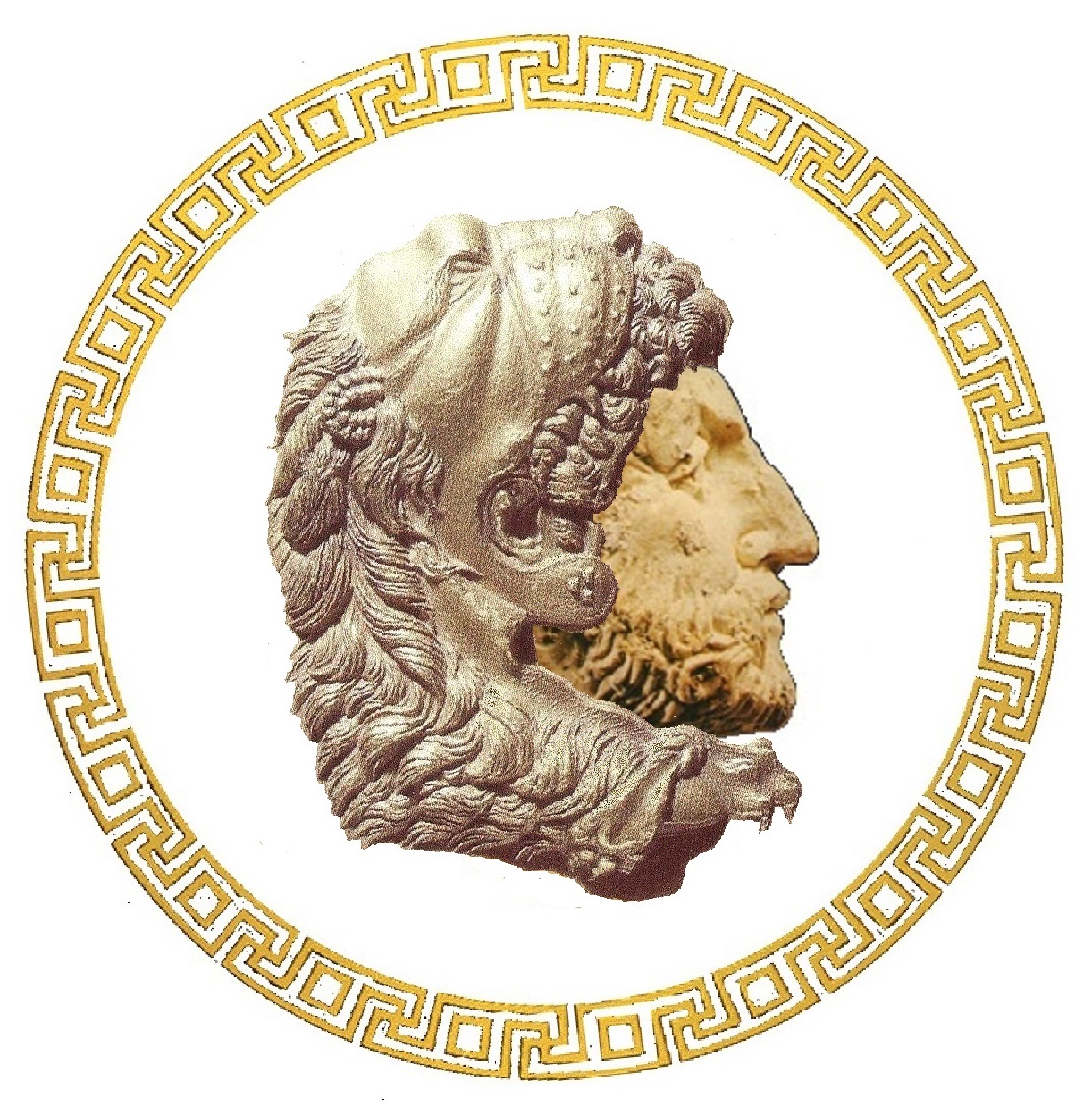
'' If
a little lion grows up among sheep,
when it grows up, it will be just one
big sheep'' - Vasileos
(your
light) Makedonon Philippoy
THE BATTLE AT THE RIVER PIND
The battle at the river Pind (not Pidna) took place in 168 BC. between the Makedonians and the Romans, on and around the fields of the modern city of Katerina. It was a battle that ended the Makedonian military and political influence over the Dze Peninsula (Peloponnese), a battle that allowed them, together with the Makedonian Peninsula, to slowly but surely fall under slavery and become part of the then Roman Republic.
From the end of the second Makedonian-Roman war (196 BC) onwards, the Romans took an active part in the Makedonian political problems, even in the Peninsula of Dze which was mostly divided into several city-states, united in military alliances - 'leagues' of which the most influential were the League of Achaia and the League of Aytolon, the war power of the city-state of Sparta was destroyed by the Romans in 195 BC, definitively. In the north, the military-political power of Makedonia was seriously questioned by the Romans.
That battle ended terribly for the Makedonians, because the phalanx was tactically divided by the Romans and the battle was lost strategically, but mostly because of the negligence of the military commanders on the battlefield. The Makedonians were left without a ruler and as such they could not succeed in the unification of the Makedonian Peninsula and thus supremacy over the Peninsula of Dze, which meant the ruin and the end of the freedom of the peoples of the Makedonian Peninsula as well as the peoples of the Peninsula of Dze, but later and more widely.
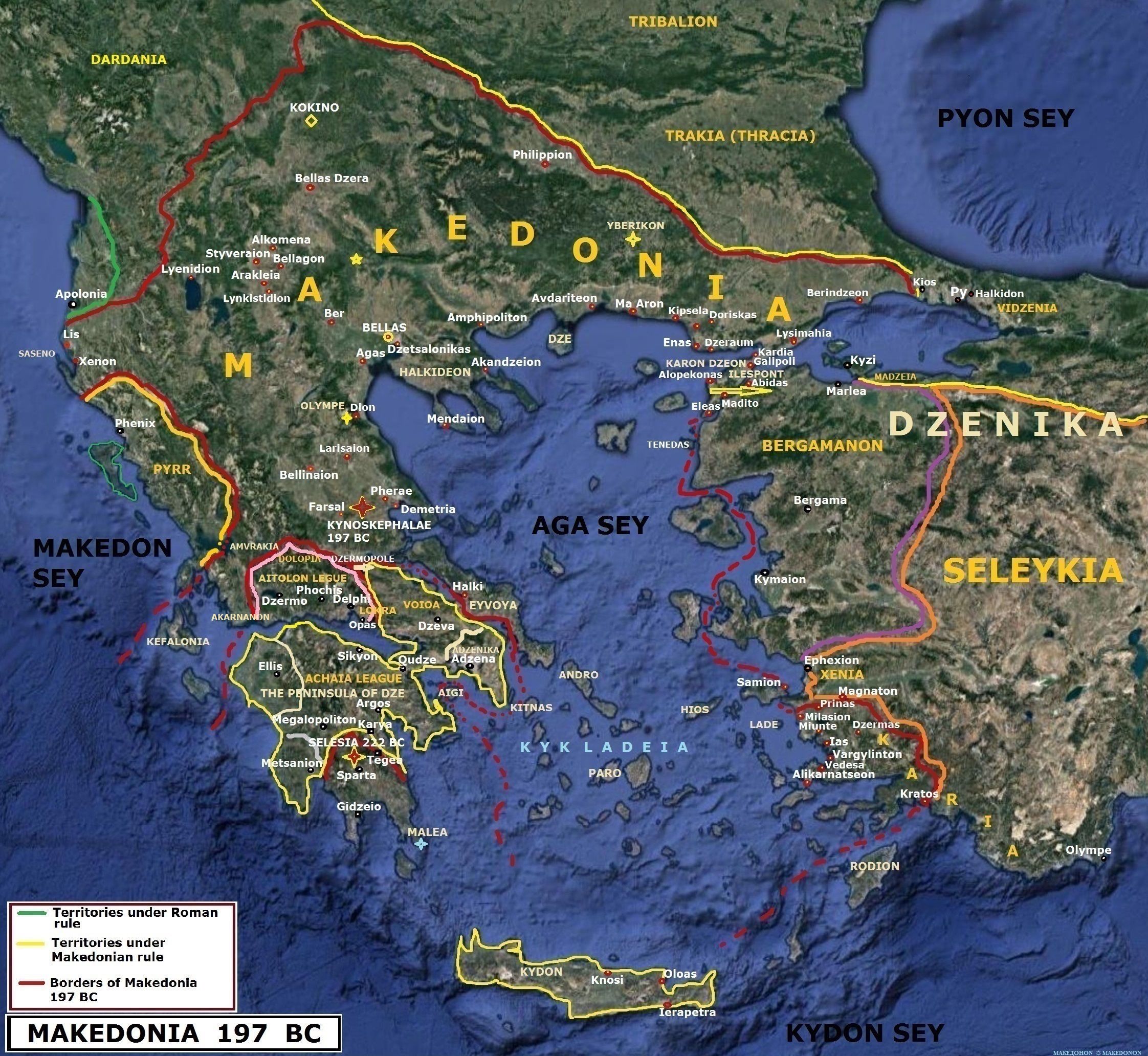
MAKEDONIA 197 BC AND POLITICAL RELATIONS
After the end of the second Makedonian-Roman war (196 BC), the Romans continued to take an active part in the Makedonian political conflicts. The Makedonians lost supremacy over the city-states especially from the Dze Peninsula and the east of Makedonia and did not foresee the danger that was presented to their own country, but therefore the majority of them were inclined to war, or rather the ordinary Makedonians, which led to an intense national character.
The government was mostly oligarchic. Thinking that most of the Makedonian ruling families would retain but increase their privileges, influence and their land if the Romans came to power, some of them conspired against the Makedonian ruler. However, surprisingly the Makedonian people put their fighting spirit behind the Makedonian ruler Vasileos Berseos, the new Vasileos - ruler of Makedonia. This may have happened because the Makedonian Vasileos himself called to them, and they thought that their possessions would be secure with his rule. And they were right.
The Romans, under the command of the consul Lucho Amilis Paullus must have advanced north of Аdzena and now they controlled land as far as Larisaion (Larisa - today's city), a city to the south of today's city of Katepina, then Pind. Between Larissa and Katepina lies the valley of Tempe - Dzetsalia (Thessaly). The army managed to pass without much difficulty through that natural obstacle, but when they reached the river Enipeats, which flows from Litochopo all the way to the sea, they were intercepted by the Makedonian phalanx led by the Makedonian ruler Vasileos Berseos and retreated.
The city state of Adzena as an influential member of the Achaean League, he provided logistics again to the Romans, against Makedonia. The Achaean League (the Achaean League led by the city state of Adzena) and the League Aytolon (The Aetolians led by Phocis - the Phocians, here the "leaders" vary) they joined the Roman Republic against Makedonia.
The Roman army numbered about 20,000 well-trained soldiers ready for battle. They had 22 war elephants, known as tanks at the time, and with them they moved through Kokinopoilo, all the way to the slopes of Petpa (Petra). Elephants were fear and trepidation for peoples, especially where there were no elephants, but they are still animals and could easily be frightened by the use of special military techniques, such as fire and become dangerous for the "users" themselves.''.
Сојузници на римјаните биле: Bergamanon, island of Rodion, the Achaean League and the League Aytolon .... The Aetolians (union) were from time enemies with the Makedonians, although they spoke the same language, Tito Livy, book XXX, pg. 29: The Akaranians, the Aetolians (So the League Aytolon -Aetolia was a military alliance, not a state) and the Makedonians spoke the same language.
- ''Aetolos,
Acarnanas, Macedonas (Makedonians) eiusdem
linguae hominess''.
The League Aytolonthey were enemies with the Makedonians for a long time, they used every opportunity to wage war against Macedonia, i.e. to free themselves from the Makedonian military-political influence.
The topography of this region has changed somewhat in the last 2000 years. The rivers flowed in other directions, and the sea penetrated the interior of the continent, much more than before. Moving with elephants across the mountains to the slopes of Petpa (Petra) was a huge task for the Romans. This was accomplished by a road made of wooden platforms, which were placed along the mountain roads in order to move smoothly. When the army reached a plain, they continued to move along the mountain range that today includes Kondiarotitsa and today's modern settlement - Nea Ephesus.
There are several alternatives regarding the fight itself, and two or three alternatives have been suggested. Pind (today Katerina) is a coastal settlement, which must have been a major port in the region a little over 2000 years ago. It is proven (reported) that St. Paul sailed from this port after his visit to this area, when the Romans were persecuting him. This visit led to his letter:
- ''The letter from Thetsalonica (Tesolunika)''.
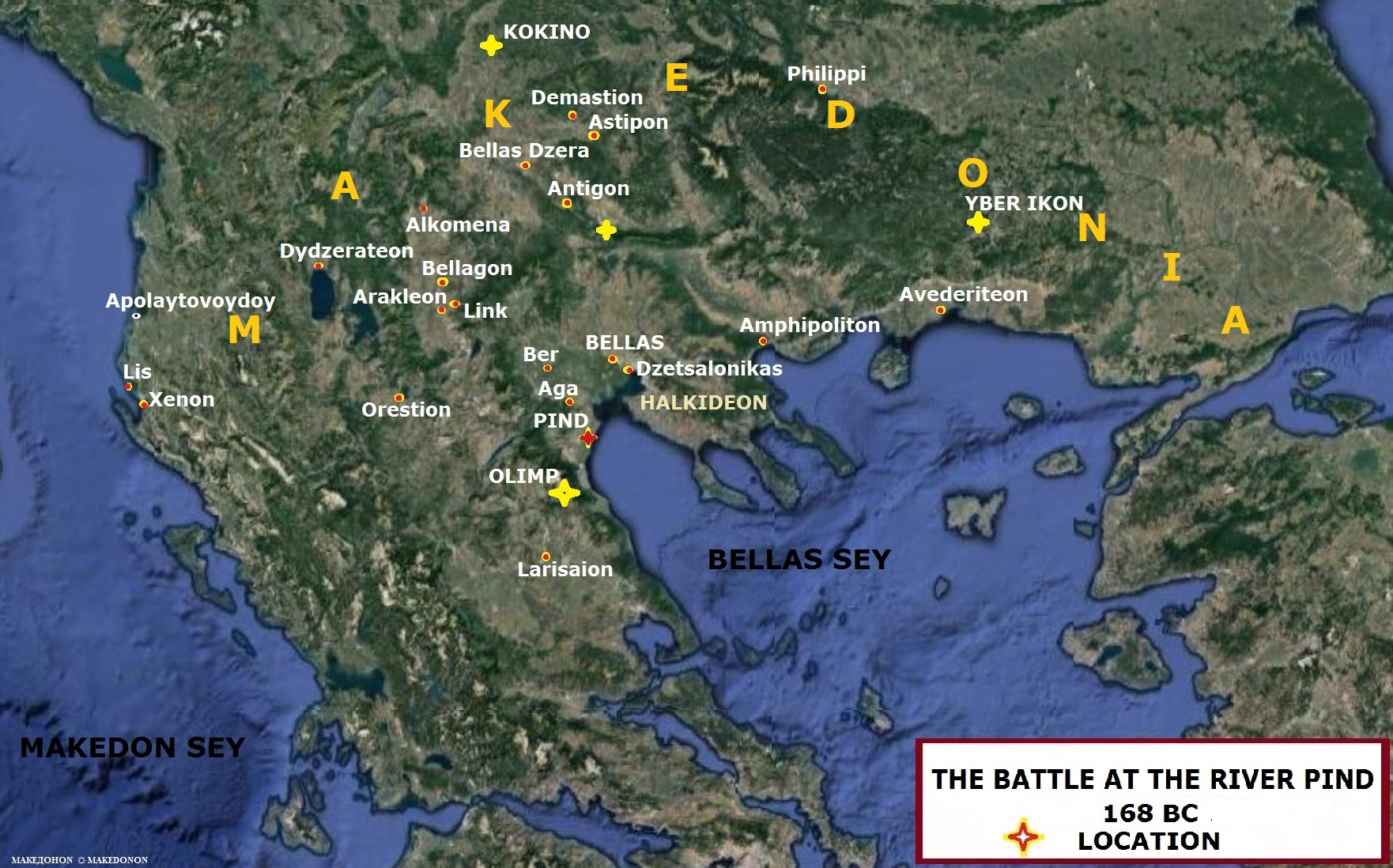
LOCATION THE BATTLE AT THE RIVER PIND
One alleged site is in the area of the village of Nea Ephesus (a new settlement, unrelated to the ancient city of Efexion of Asia Minor, unless it was inhabited by colonies there - magiri), in the borders (or end, vicinity) of Katepina. It is positioned at the end of the range of hills that divide the plain into two parts, with Katepina to the north and Larisaion (Larissa) and the valley of Tempe to the south. If you visit the place and climb the hill where the church is located and beyond, you have a nice view of the surroundings in both the north and south. Now try to stretch your imagination to get a scene from more than 2000 years ago - how the soldiers wait before the fight begins, how the horses are excited and how the massive elephants are lined up waiting for the fight to start. Elephants are undoubtedly one of the decisive (fateful) factors in the battle.
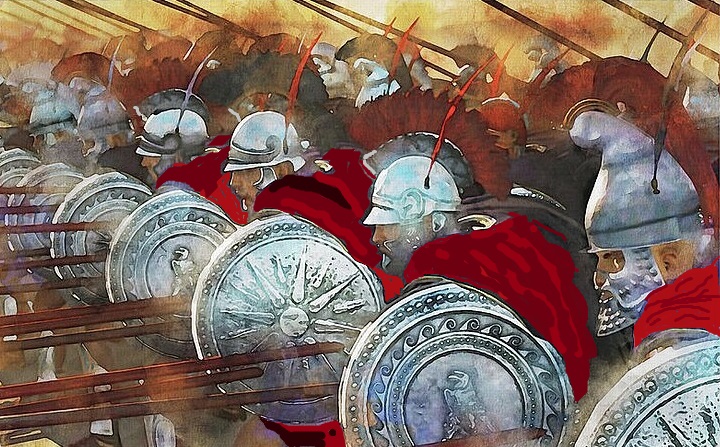
The Makedonian phalanx
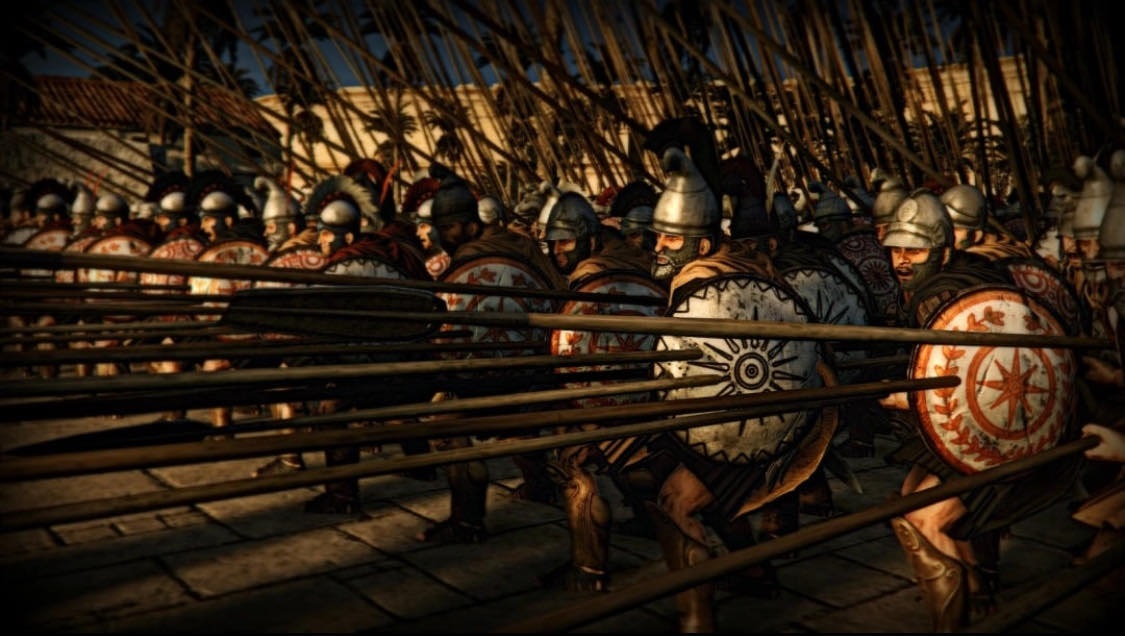
The Makedonian phalanx
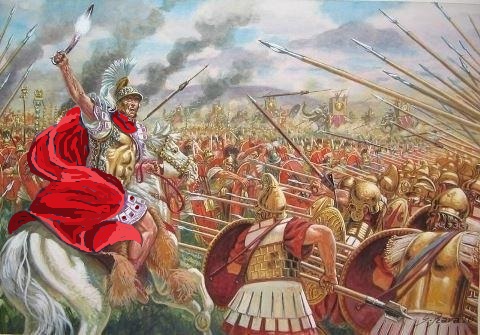
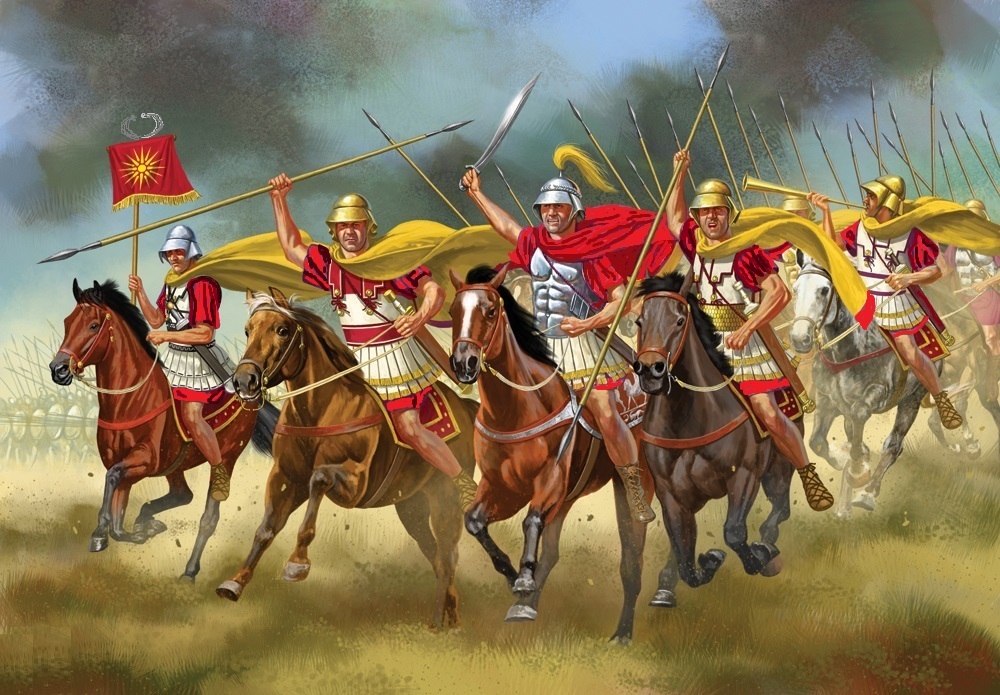
The Makedonian cavalry
Between 45,000 and 50,000 Makedonians were mobilized against more than 20,000 Romans, 4 Roman legions and as many of their allies.
The Roman consul Lucho Amilius Paullus declared after the battle:
''I have not seen anything more terrible than the Makedonian phalanx''
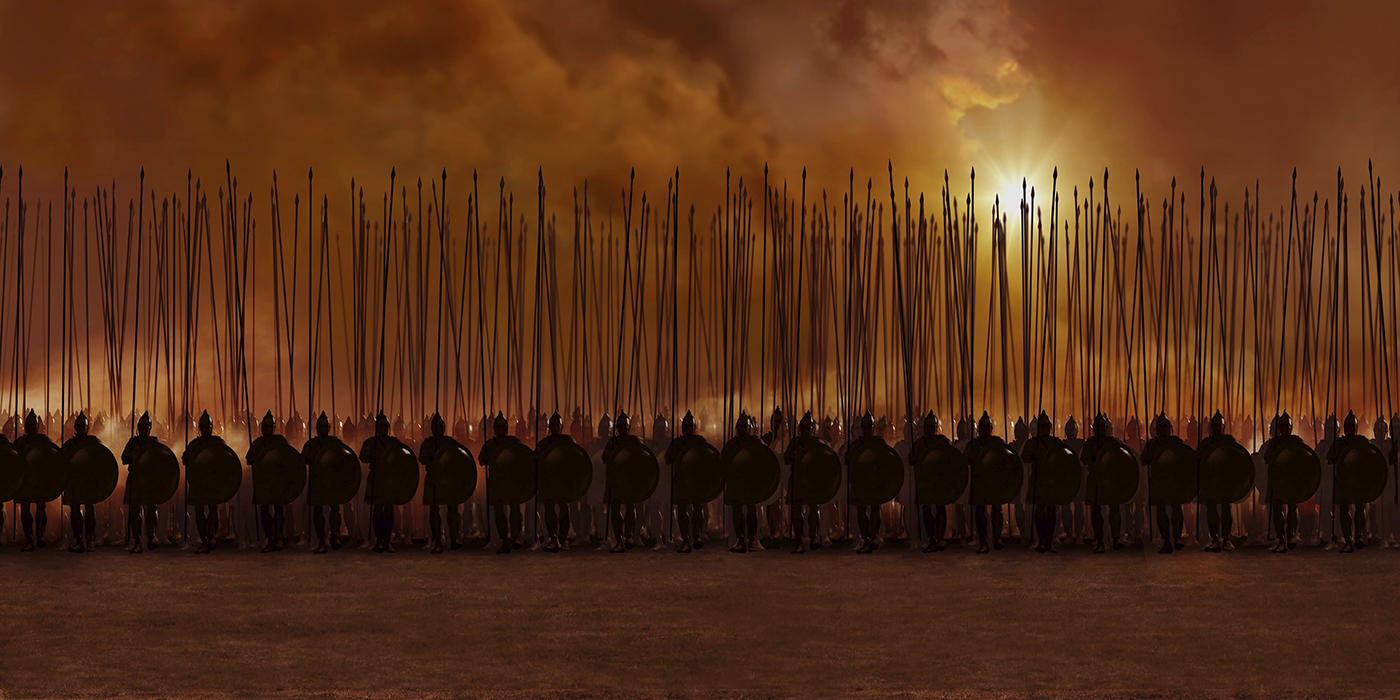
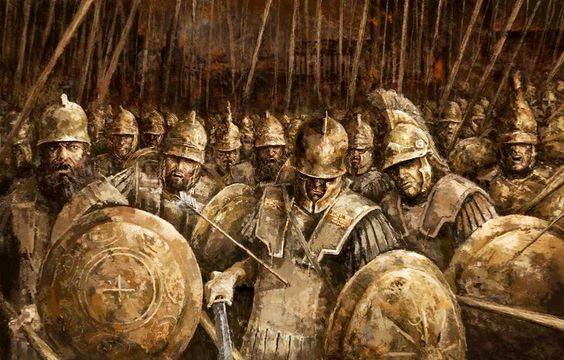
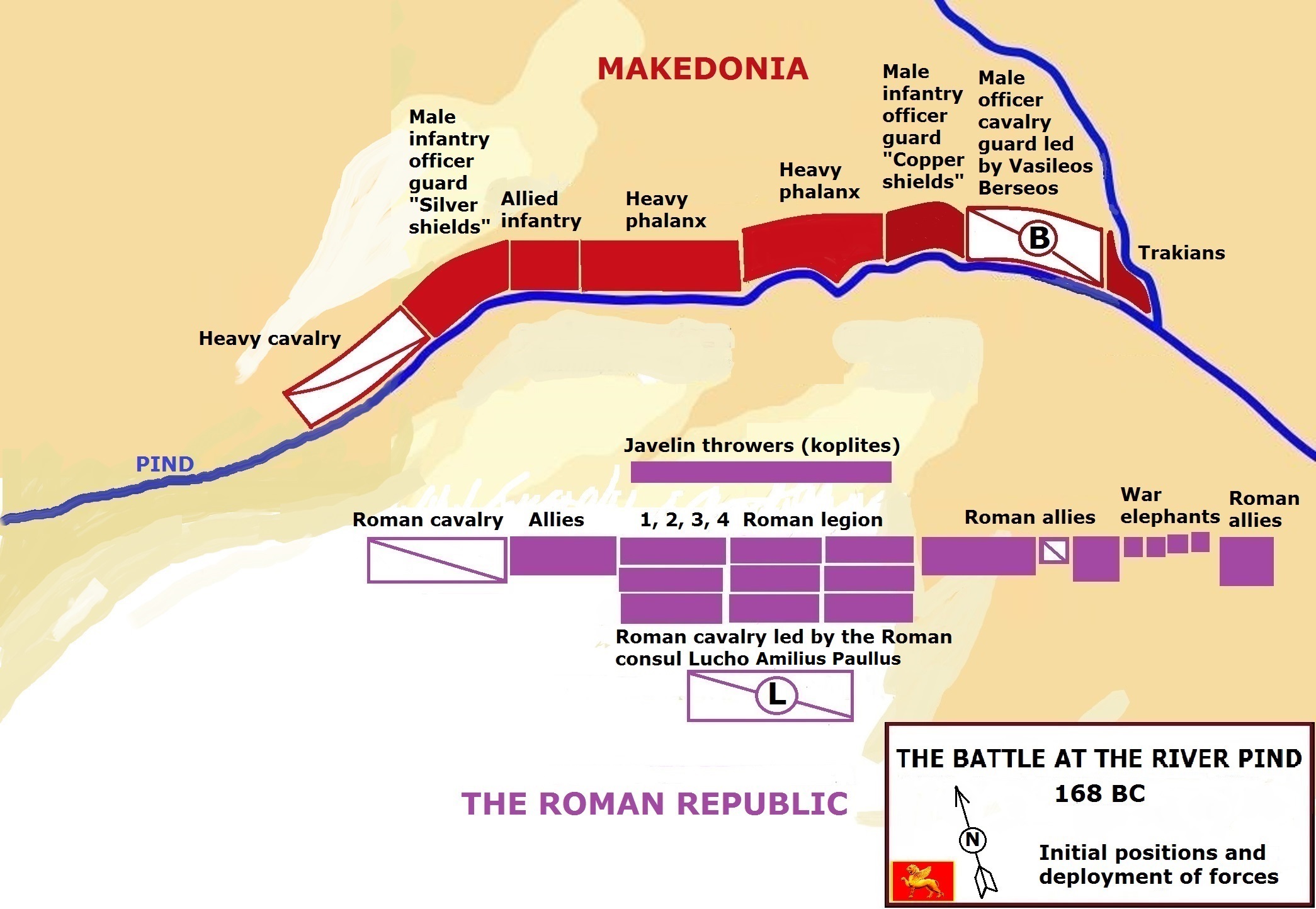
On 22 Panon (June), 168 BC the two opponents lined up in battle order on both sides of the river Pind (Lefkos). Before the battle began, several sacrifices were made by the Romans in honor of God, and in the first instance these sacrifices led to discouraging results, but the consul Lucho Amilus Paullus instructed his priests to try again. On the second attempt, the sacrifices received more encouraging signs, so he told the soldiers that he was confident they would win in the end, even though the battle might be difficult at first. (And the Makedonians also performed such rites, but it is probably not stated in the sources, why this is primarily, to a good extent, Roman sources'').
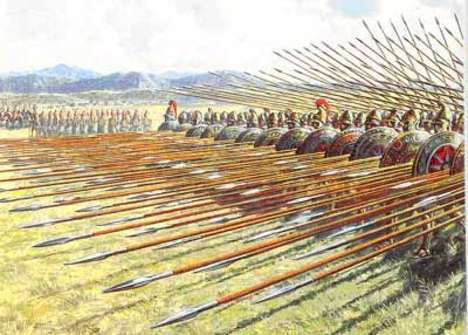
The Makedonian phalanx
The Makedonian army led by the Makedonian ruler Vasileos Berseos was formed (established) in the following order:
-On the right was the cavalry, next to them stood the allied light infantry troops and the male officer guard, which numbered 3000 mens.
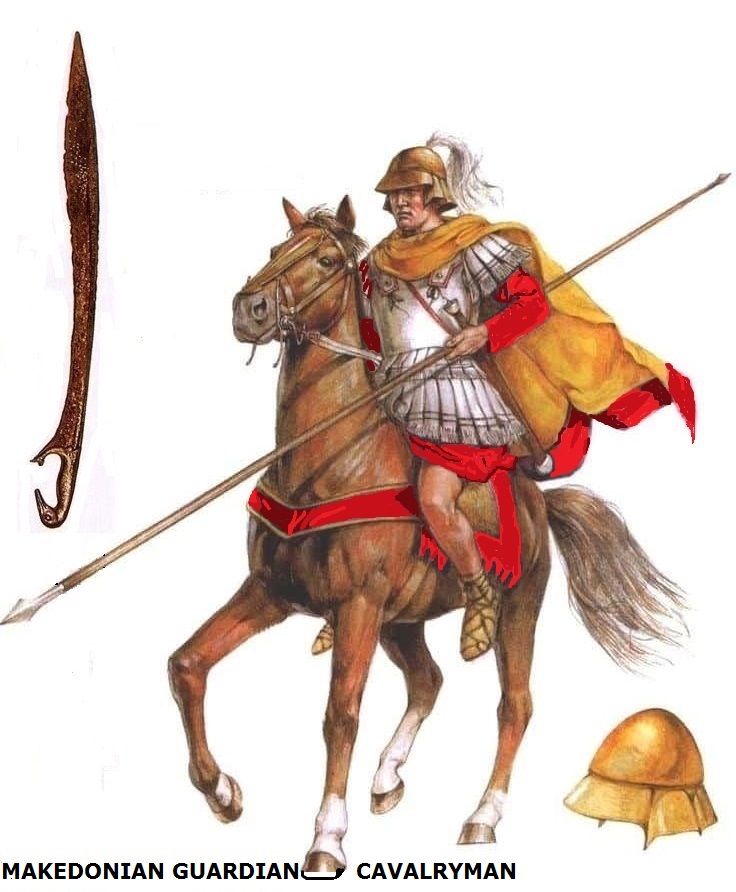
In the center, stands a phalanx with two wings.
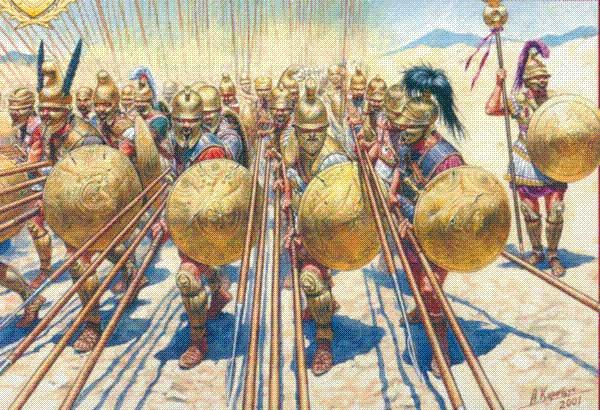
On the right wing there were soldiers wearing silver shields, and on the left wing soldiers with copper shields.
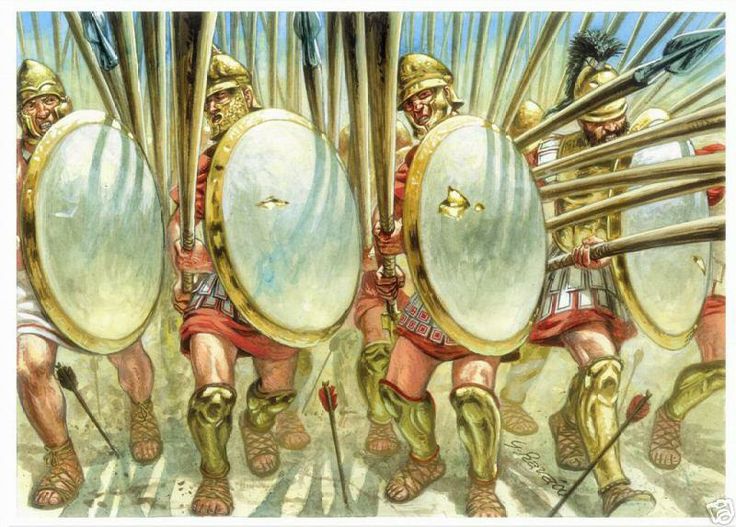

To the left of the phalanx, stood another male cavalry officer guard, a perfect 3000 independent (detached) horsemen, supported by a group of Thracians.
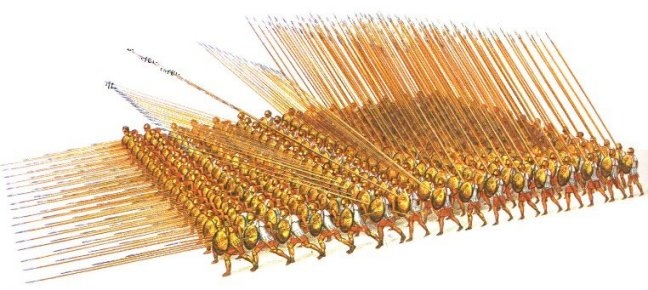
Troops armed with 6-7 meter long spears ''sor'' (javelin for cutting) and ''osa'' (wasp) were in the very center. The first four rows held the spear in a horizontal position, and the others behind them at an angle.
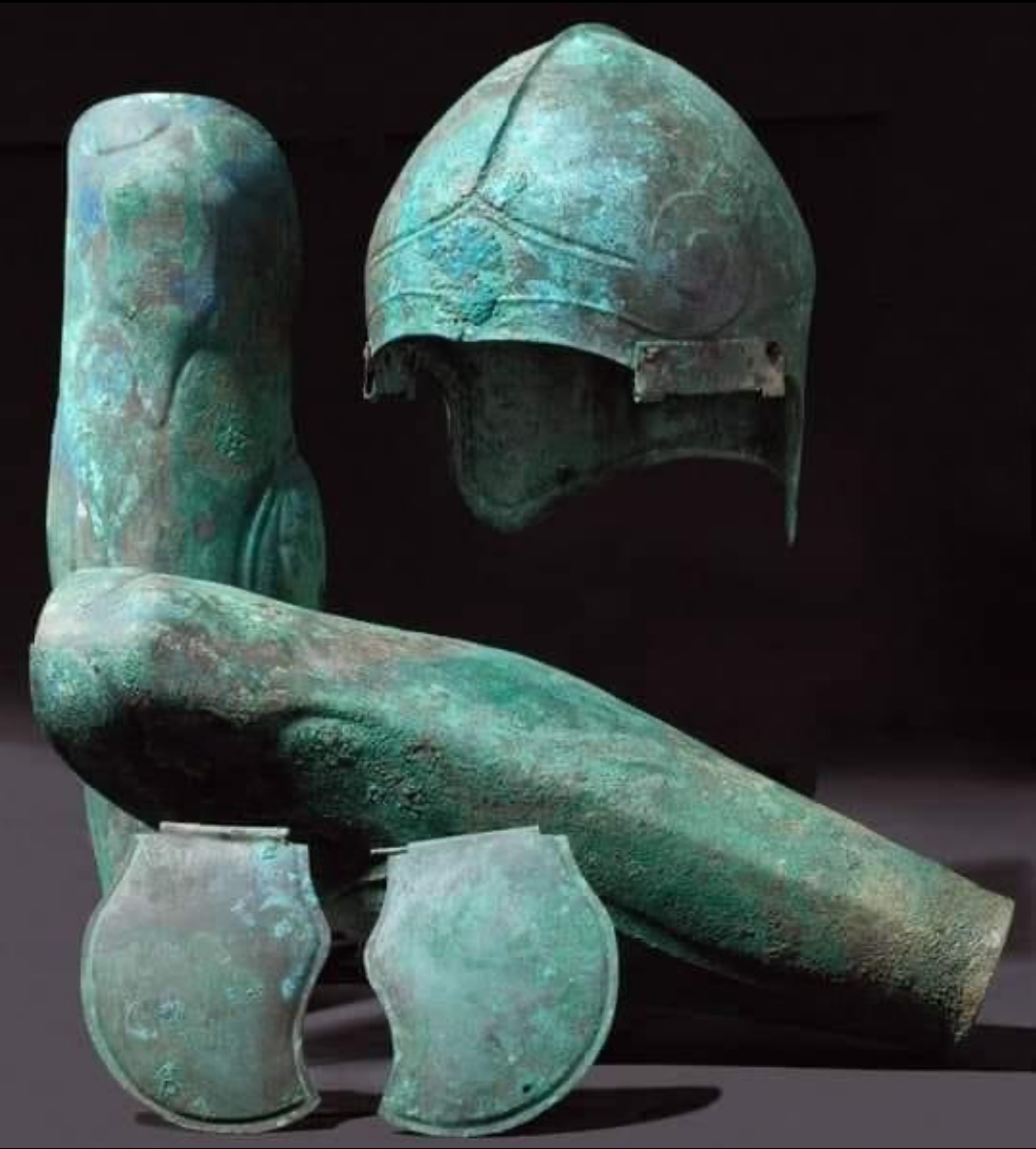
Makedonian military protection
The Roman troops on the other side of the river Pind (today Lefkos) placed their cavalry on the left with the allied troops flanking them..
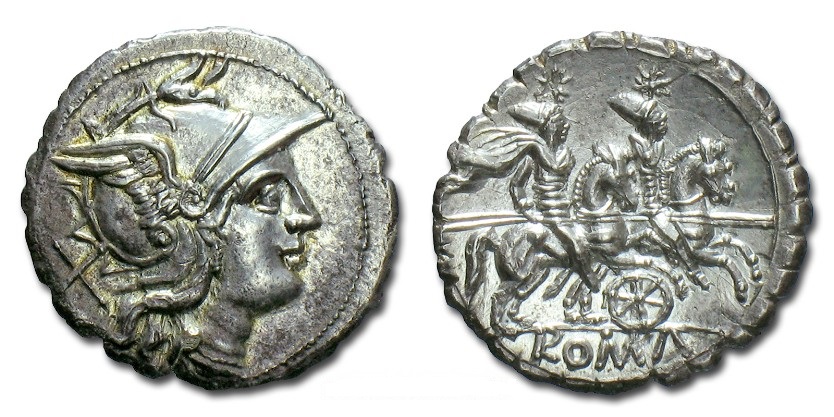
Coinage of the Roman Republic, after 197 BC, (to the left of the coin is the image of the Makedonian ruler Vasiloen Makedon Alexandroy, to the right ''Roman horsemen'') Roman cavalry, the Romans copied all the advanced military techniques, evidently they also copied the Makedonian cavalry, while the infantry was a copy of the "Libyan infantry" and its tactics.
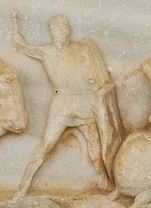
Roman legionnaire with their typical large shield - relief from the monument at Delphi commemorating the 'Battle at the Pind River''
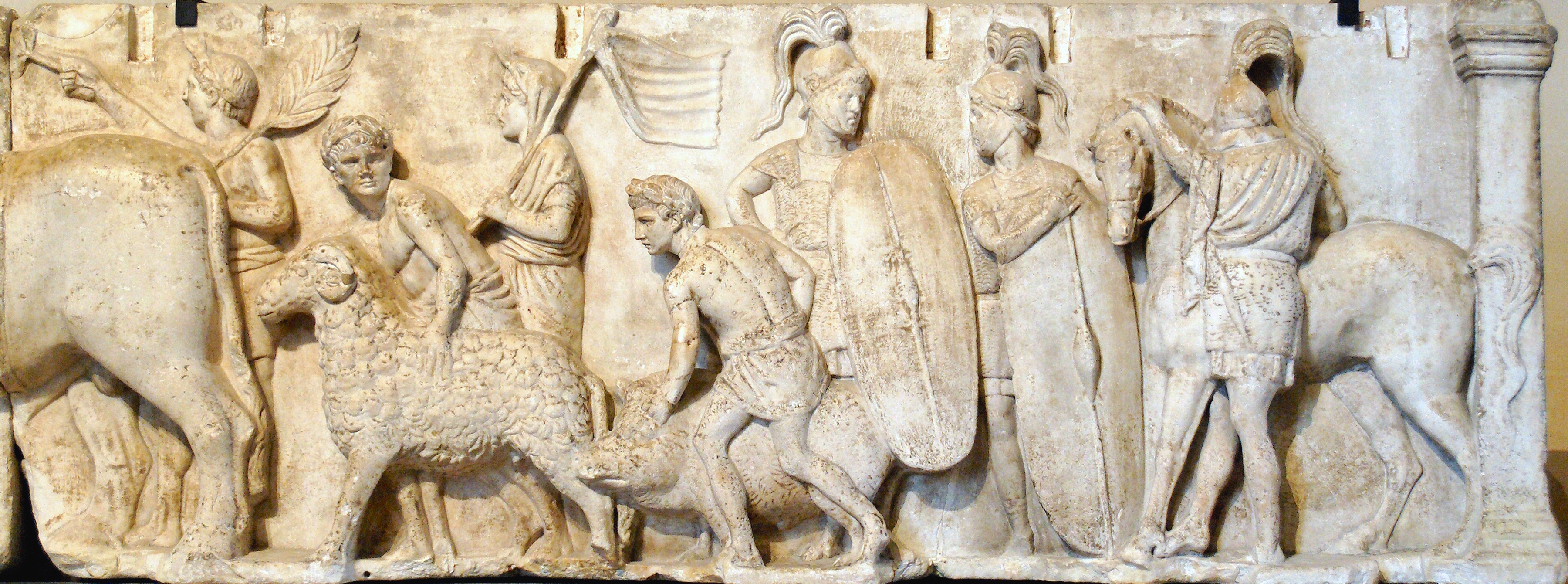
Detail from the Ahenobarbus relief showing (centre-right) two Roman infantry-soldiers c. 122 BC. Note the Montefortino-style helmets with horsehair plume, chain mail cuirasses with shoulder reinforcement, oval shields with calfskin covers, gladius and pilum.
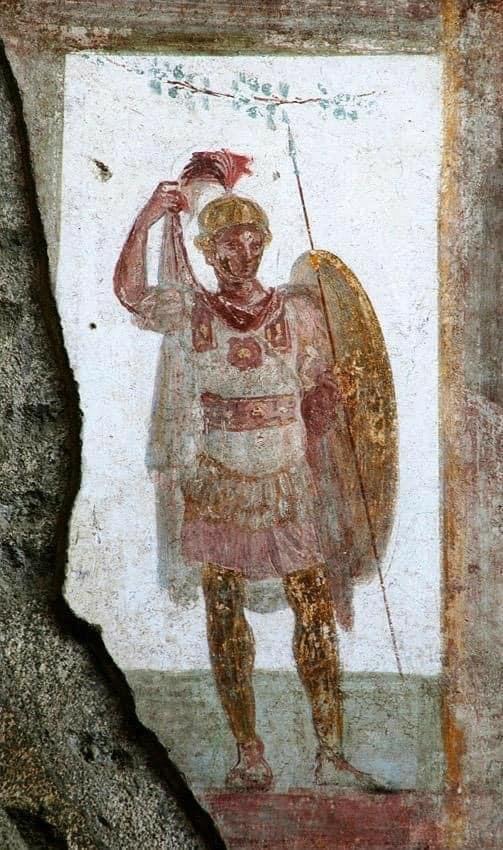
A fresco from the "House of Valerius Rufus" in Pompeii. This is presented as a "Roman legionnaire" from the time, a fresco, but according to the military equipment, it is surely a Makedonian soldier belonging to the "Silver Spears" (the Makedonian "Holy Company" or Guard)
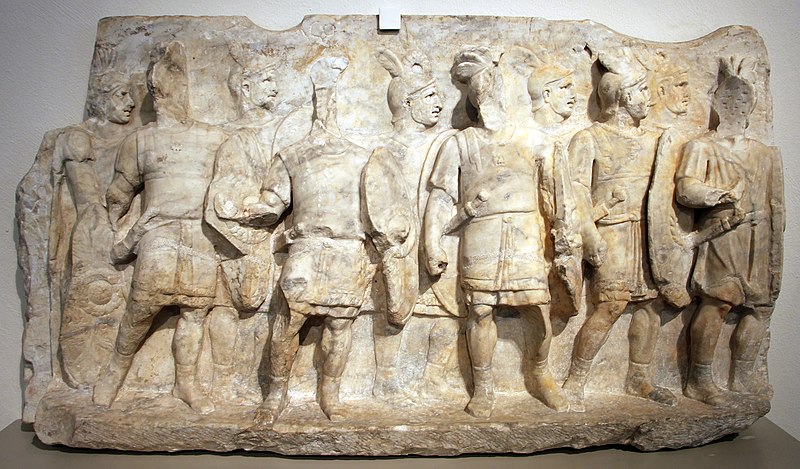
Roman infantry from the 1st century AD, relief, it can be seen that the Romans were "inspired" by the Makedonian phalanx for a long time
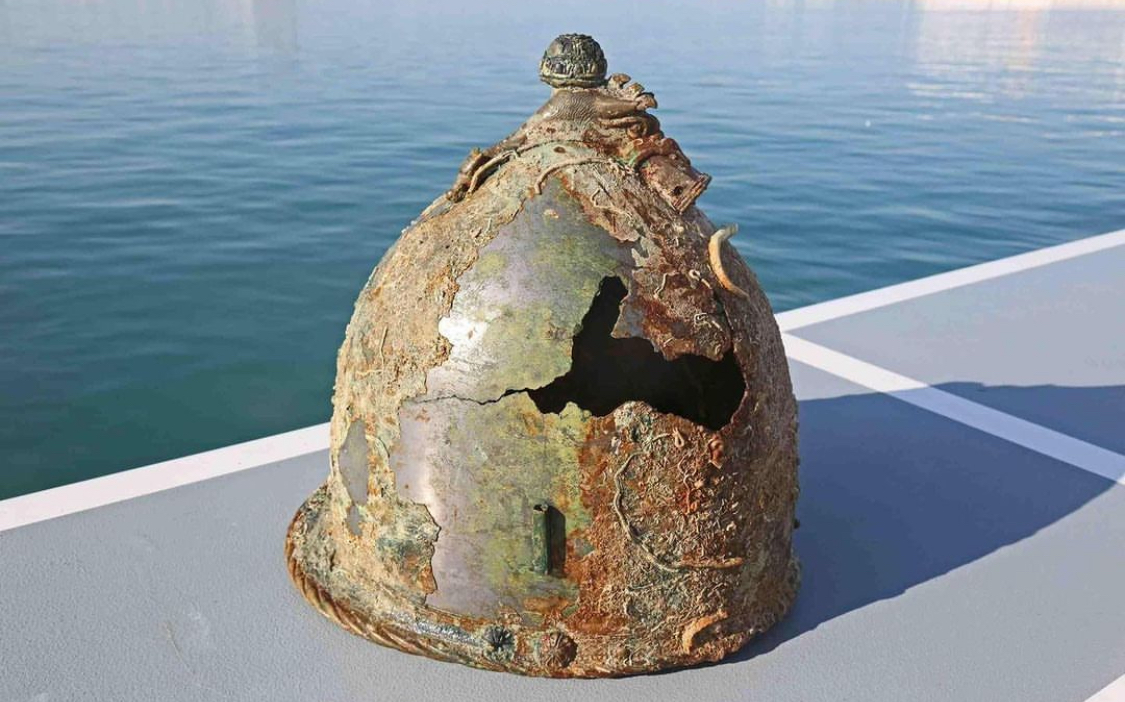
A Roman helmet from the time at sea found near present-day Sicily (probably near the city of Syracuse)
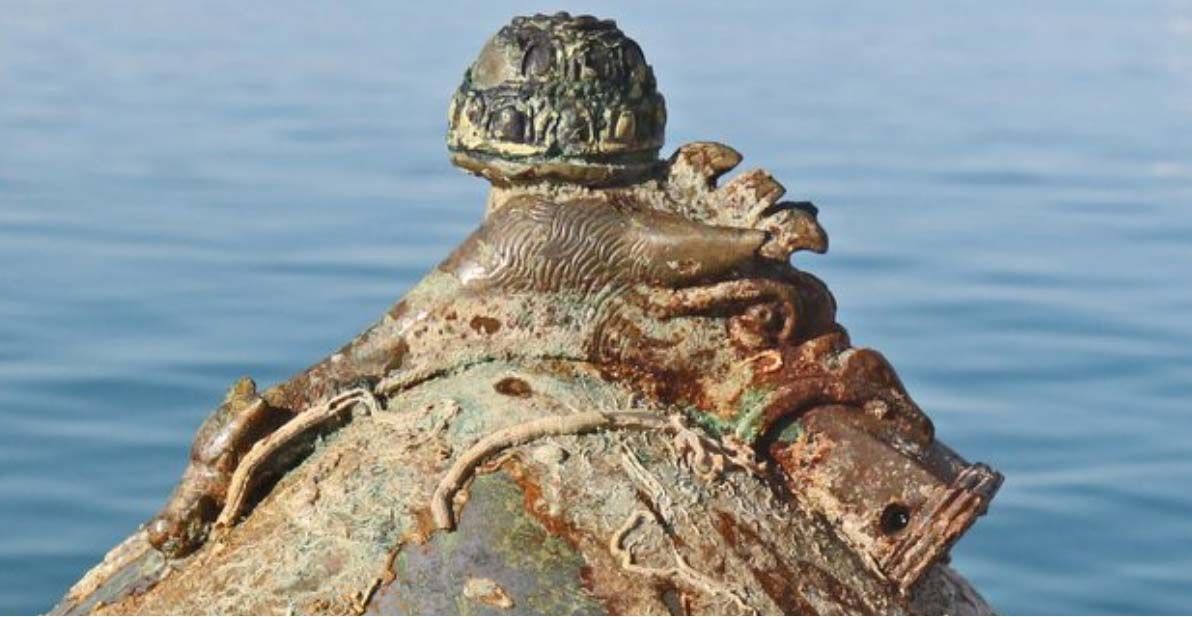
Roman helmet, detail of the top
The central place on the front in front of the troops was occupied by spear throwers - koplites, while behind them stood three rows of legionnaires. The allied Roman army was placed on their right. Through (or over) that point were 120 horsemen, 22 elephants and units from the rest of the allied forces.
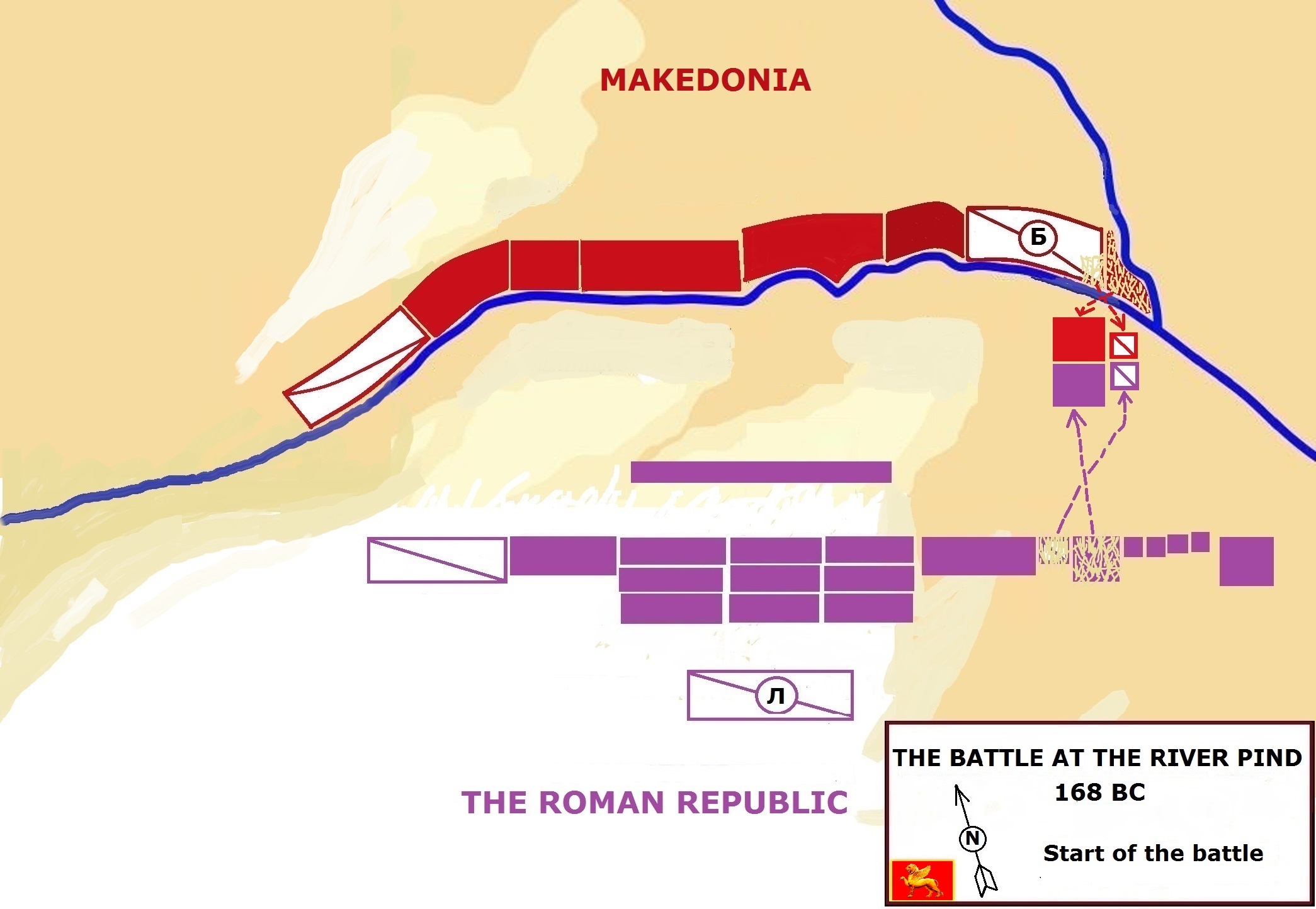
The fight started when a stray horse entered the river and both sides tried to catch it. The fighting began, and permission to attack was given at noon, when 800 Thracians under Alexander's command collided with the three thousand Roman infantry and 120 of their cavalry (mostly Roman allies). Both opponents immediately received reinforcements.
The Romans were armed with swords, which were apparently much shorter than ''sor'' and ''osa'' (the Makedonian spear) and shields, but still this led to their advantage, when they managed to separate the Makedonian phalanx and attack them from the side in close combat, without the help of the Makedonian cavalry. The Roman consul Lucho Amilis Paullus, positioned on the hill above the battlefield, noticed that the Makedonian troops were having trouble handling the "sor" and "osa" ' (the Makedonian spear) over the undulating terrain, and he successfully maneuvered the opponents to attack on the hill, where they were in an awkward position.
When the Makedonian ruler Vasileos Berseos saw that the Makedonian soldiers were in good shape because the fight was going in their favor, he ordered a general attack.
As the first Makedonian forces began to cross the river, the commander-in-chief of the Roman army, Amilis Paullus, ordered an attack!
He inspired his army by circling around them without a helmet or protective vest.
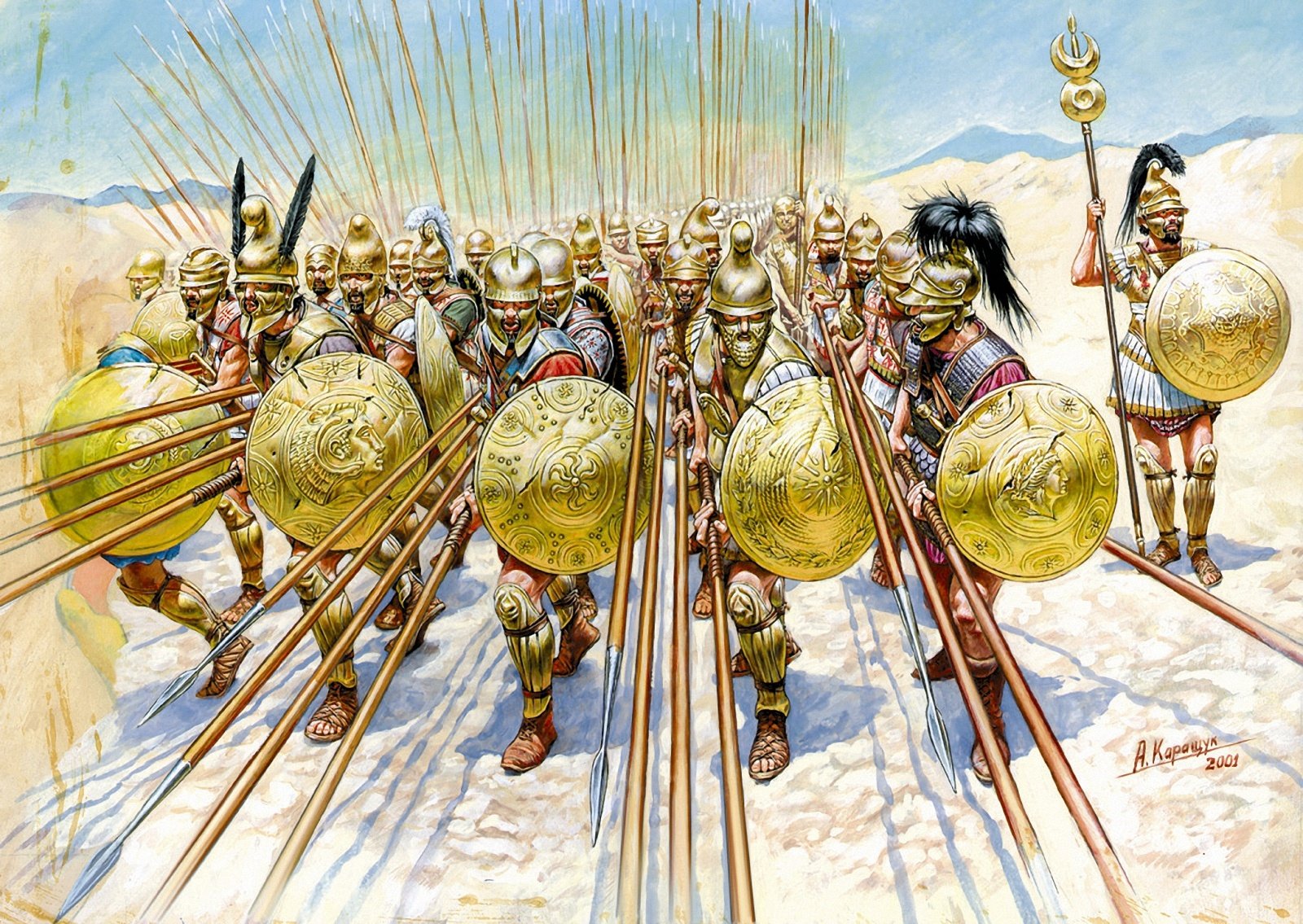
The first Macedonian forces appeared and attacked the first Roman units. These troops consisted mainly of Roman allies. They fought bravely, sacrificing many of the men who fought, but still failed to stop the invincible Makedonian phalanx. In an attempt to counter the pressure put on them by the left part of the Makedonian phalanx, the Roman consul Lucho Amilus Paullus sent 22 elephants under his command into battle, accompanied by most of the allied cavalry. The Roman forces, especially the elephants, were a decisive part in stopping the Makedonian advantage. The Makedonian phalanx could not complete its mission due to the counter attack of 22 elephants and the new circumstances.
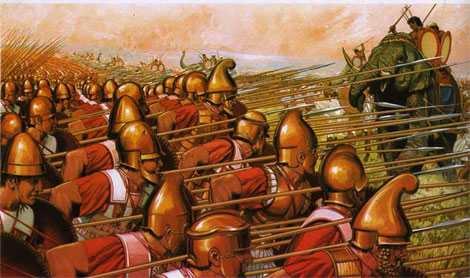
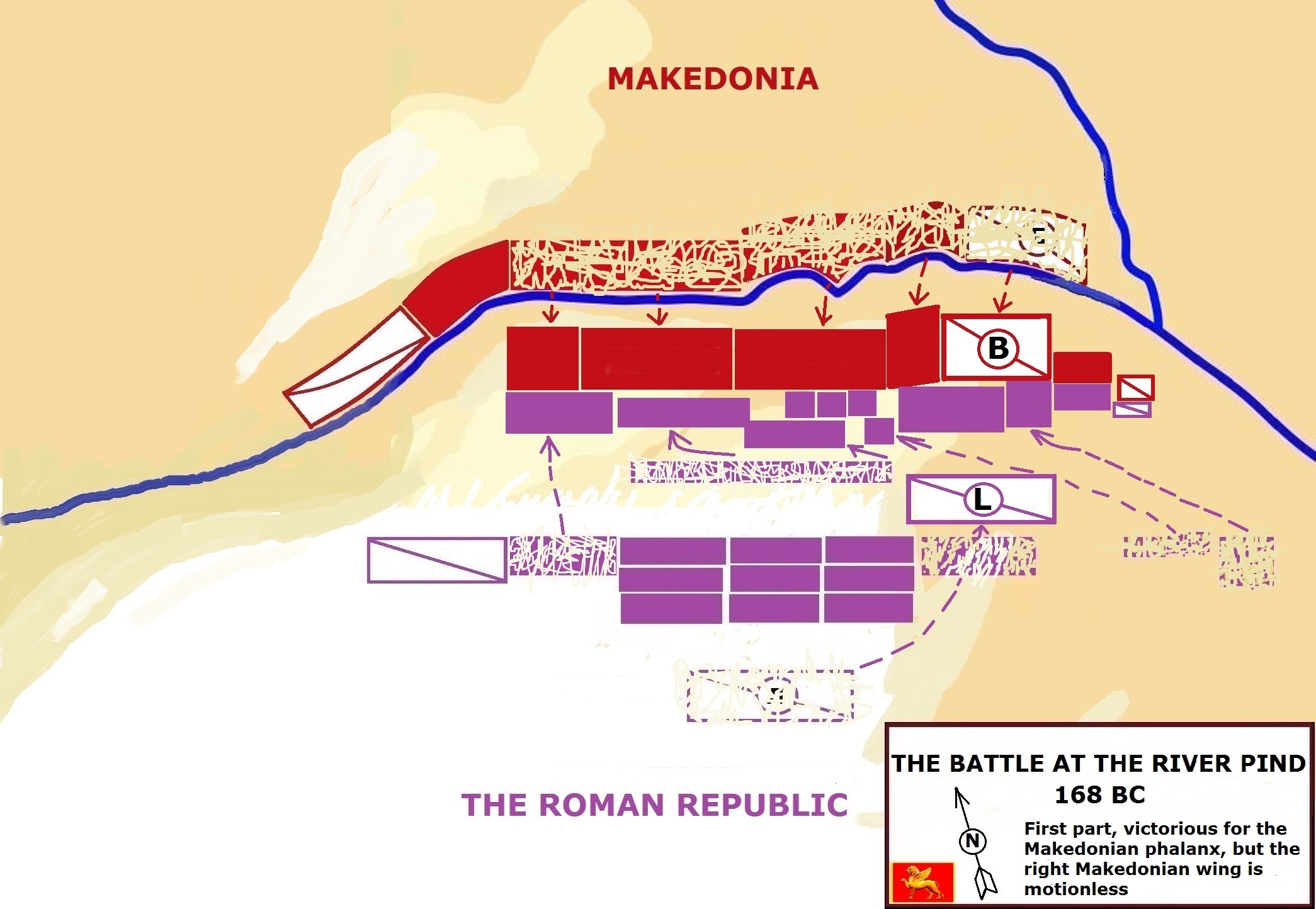

The Makedonian ruler Vadileos Berseos was apparently wounded, although the injury was not serious, he left the battle and returned to yhe city of Pind where his phalanx was based, and he was accompanied by the Makedonian cavalry from the left wing, but the Roman navy, which was along the sea coast, killed many of them, big tactical errorto leave the phalanx unprotected from the side. But it's not just a mistake, we'll see further on that the right wing - the cavalry from the right wing, it didn't move at all and left the center of the Makedonian phalanx unprotected, means a typical example of betrayal, I wouldn't say lack of coordination or uneven terrain, but the Macedonian cavalry from the right did not attack at all.
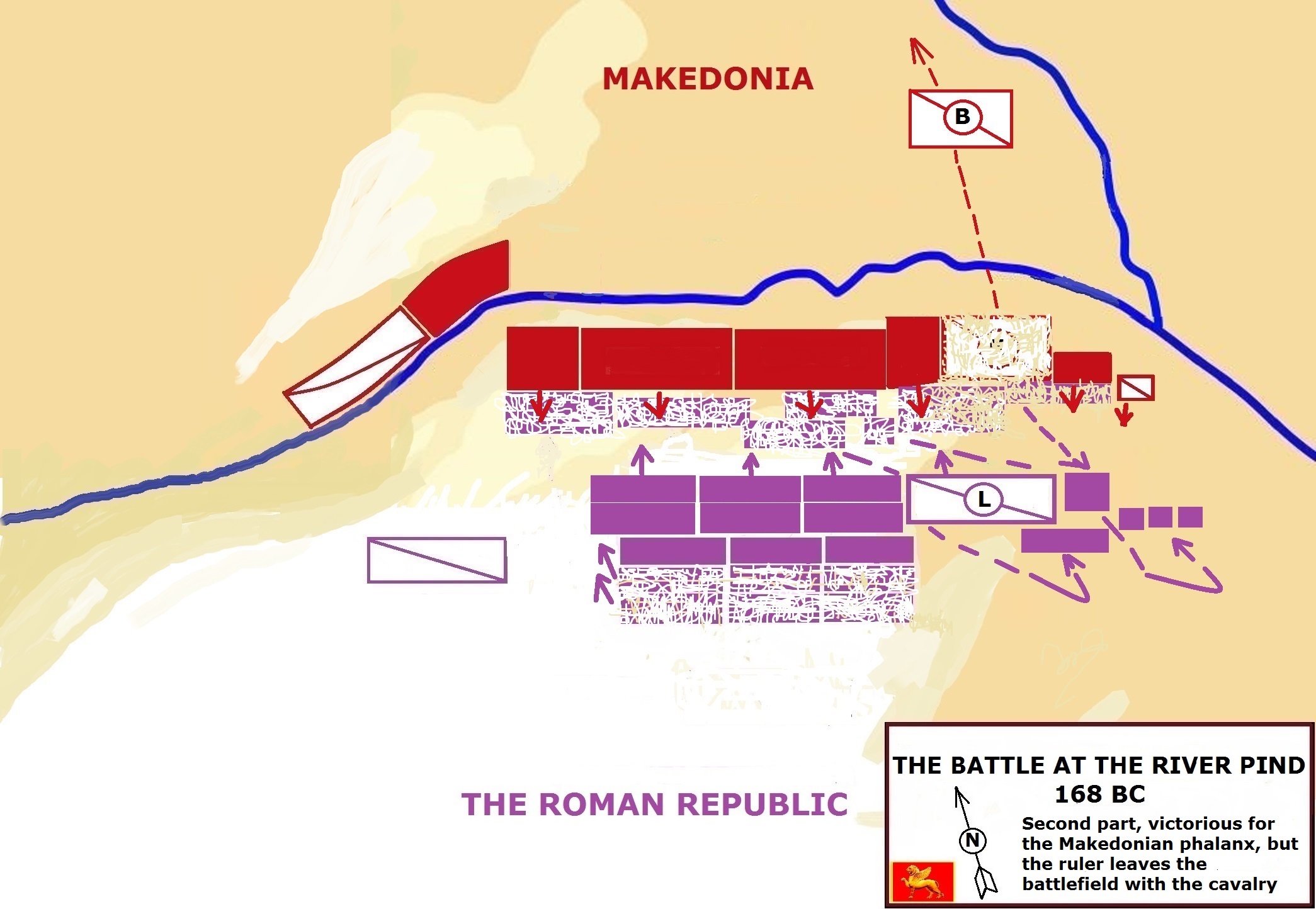
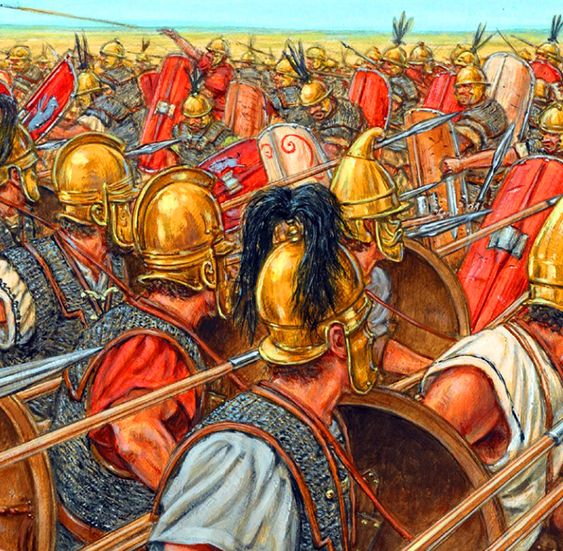
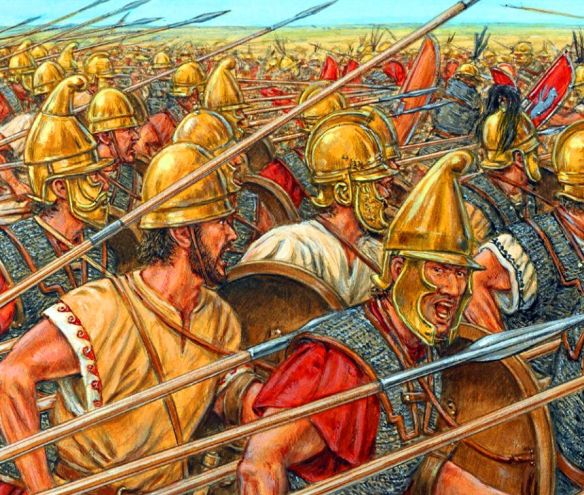
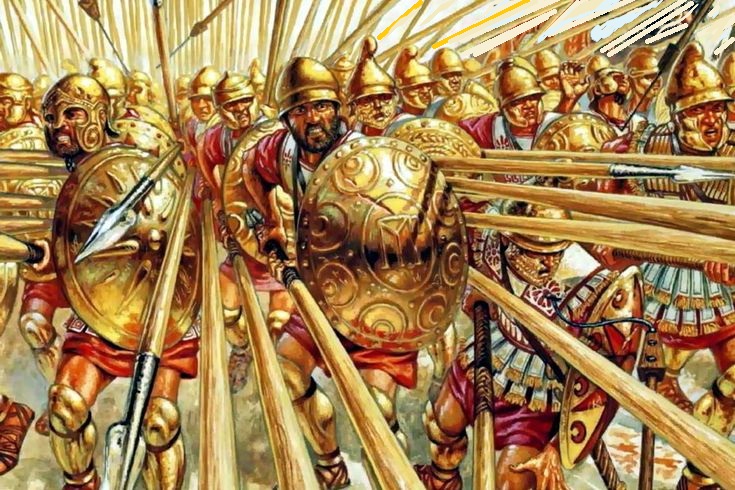
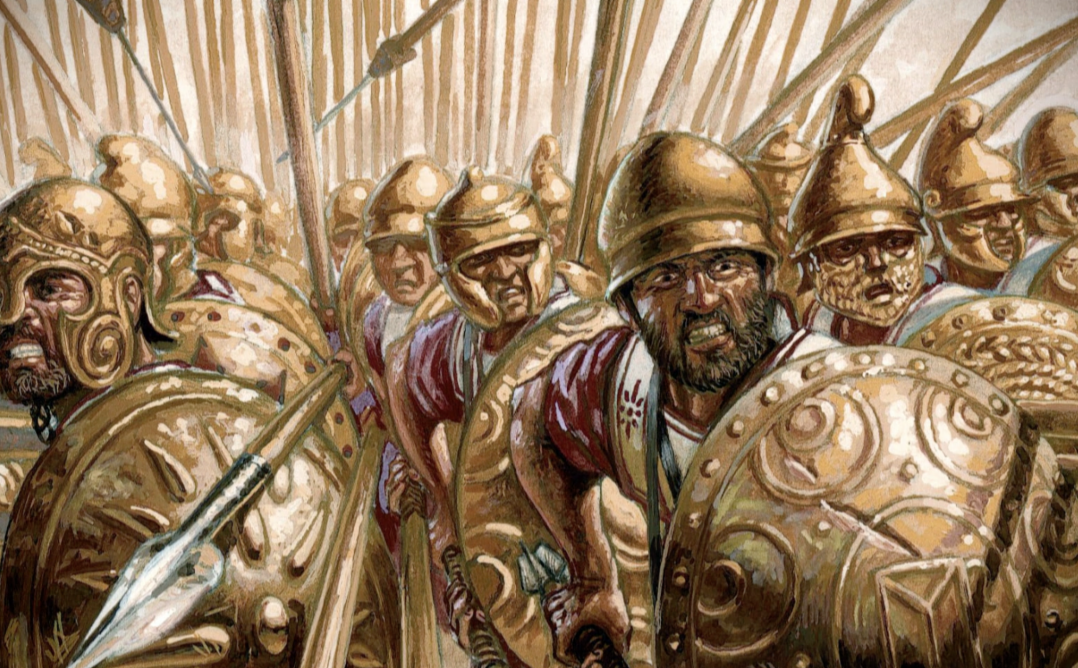
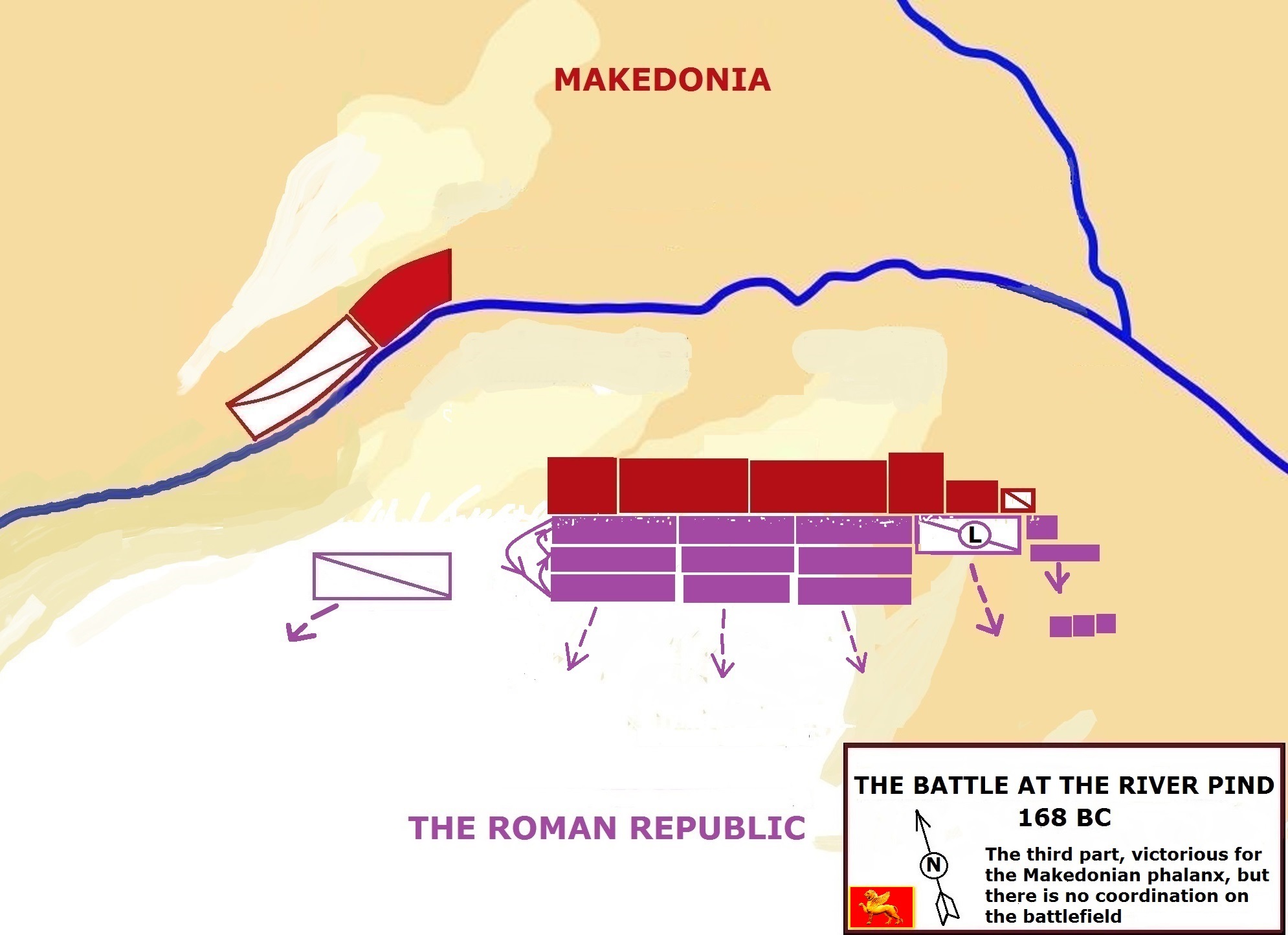
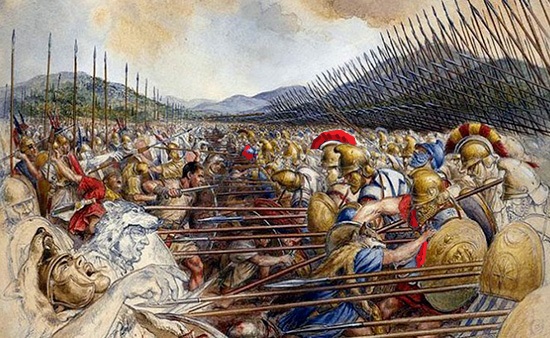
After that the Roman consul Lucho Amilus Paullus turned to face the phalanx. His attempt was unsuccessful because the long Makedonian spears hit the Romans directly in the face.
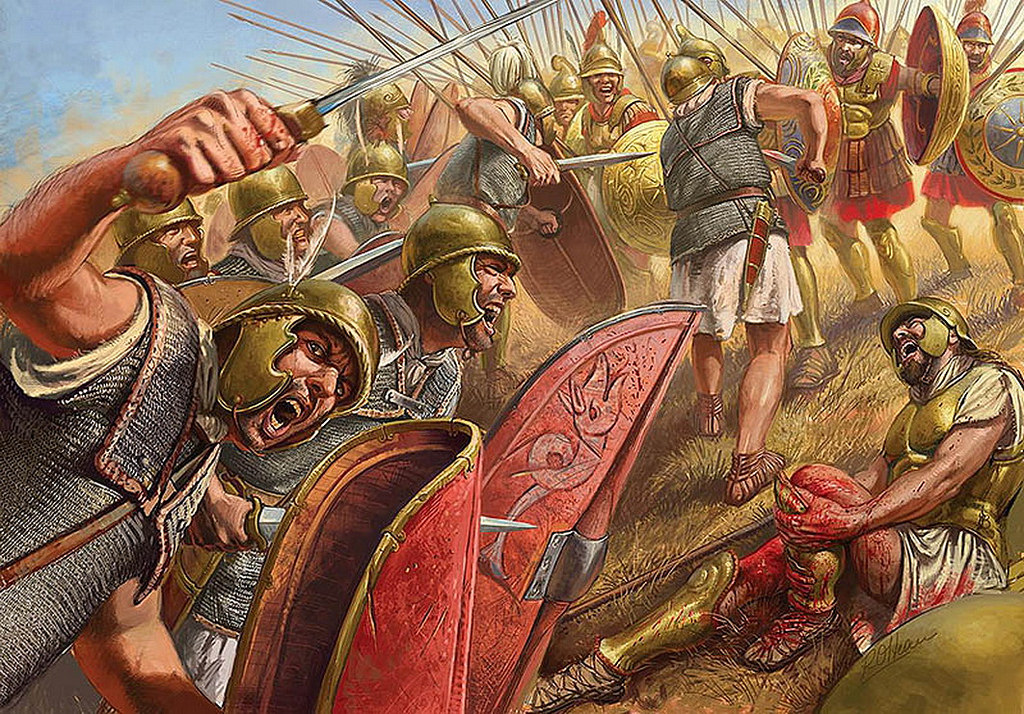
However, the Makedonian ruler Vasileos Berseos left the battle and returned to Pind because he was wounded, and his generals on the battlefield did not follow the progress of the battle very well.,.. here the Makedonian phalanx had to withdraw across the river and reorganize.
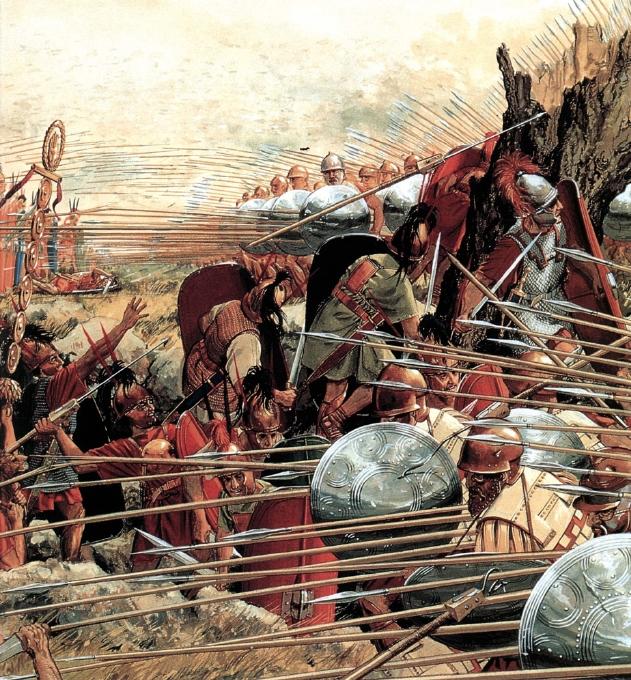

The Roman consul Lucho Amilus Paullus, completely under his command, ordered his legions to retreat across the rough terrain through the hills, and in doing so, he forced the Makedonian phalanx to move in that direction as well.
The Makedonian phalanx, moving up, attacked the Roman army.
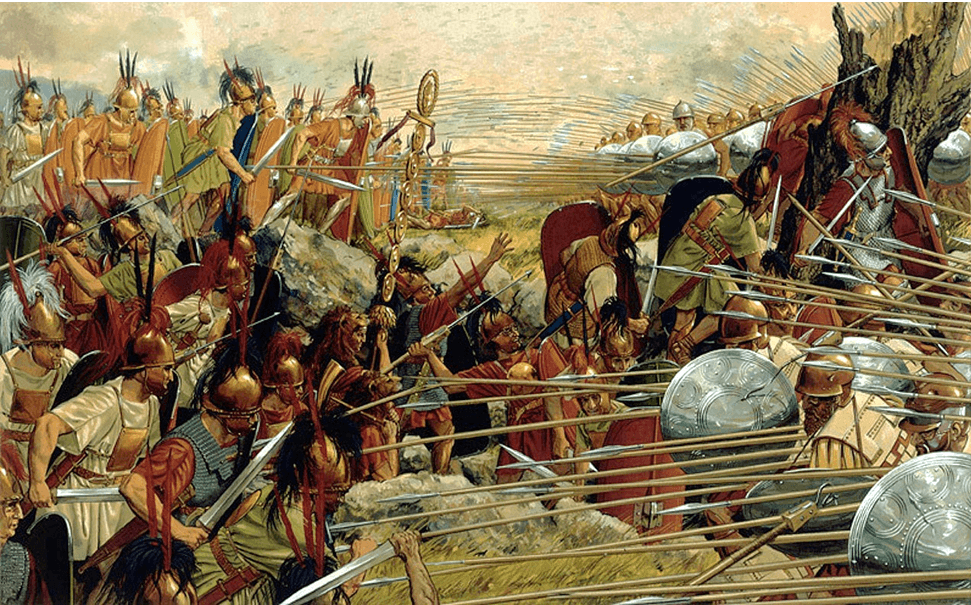
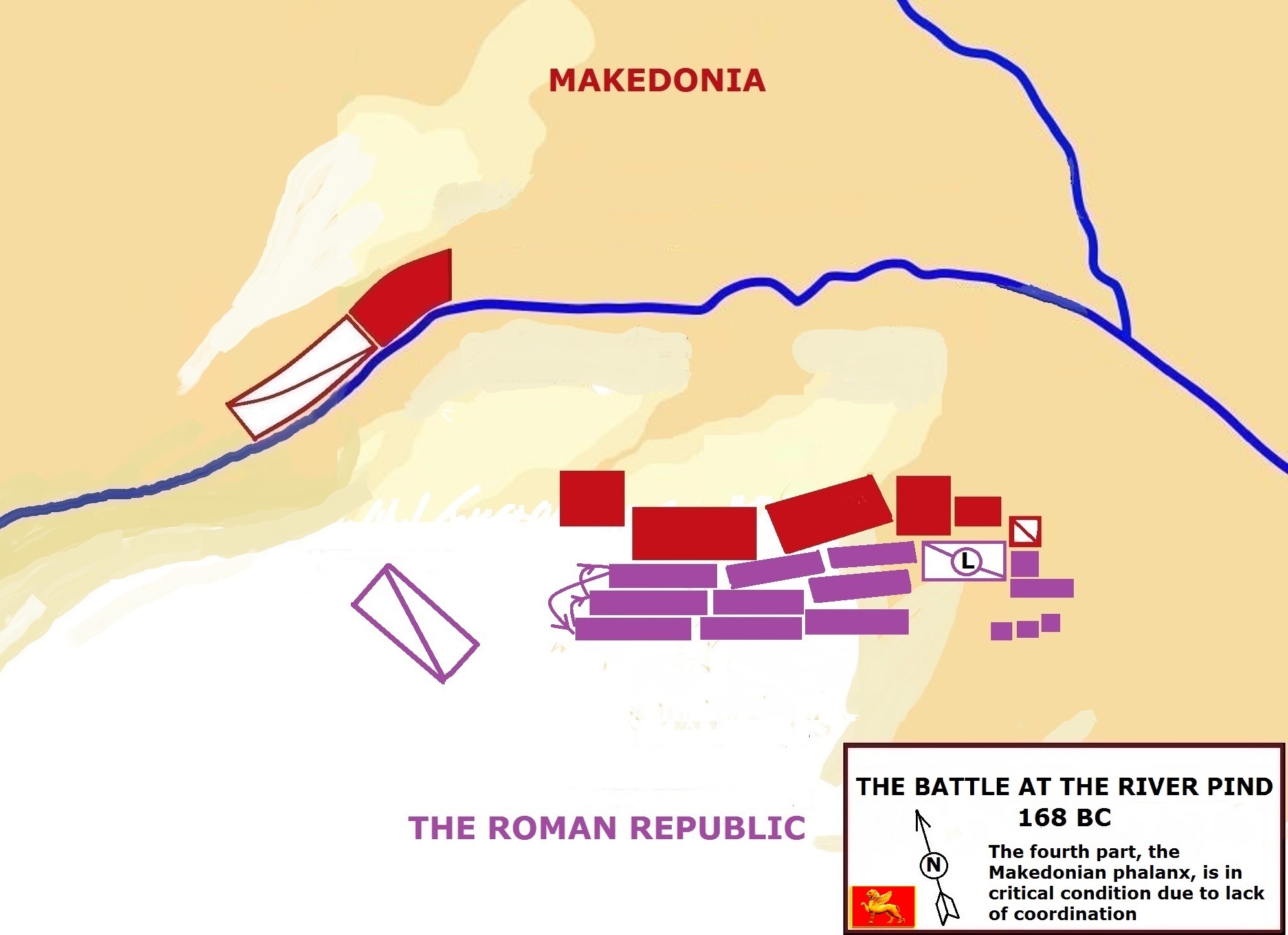
The Romans retreated by constantly changing the first three lines. Due to the unevenness of the terrain and the length of the front, the phalanx was forced to split so that eventually gaps appeared between the ranks. These divisions destroyed their unity and hence their strength.
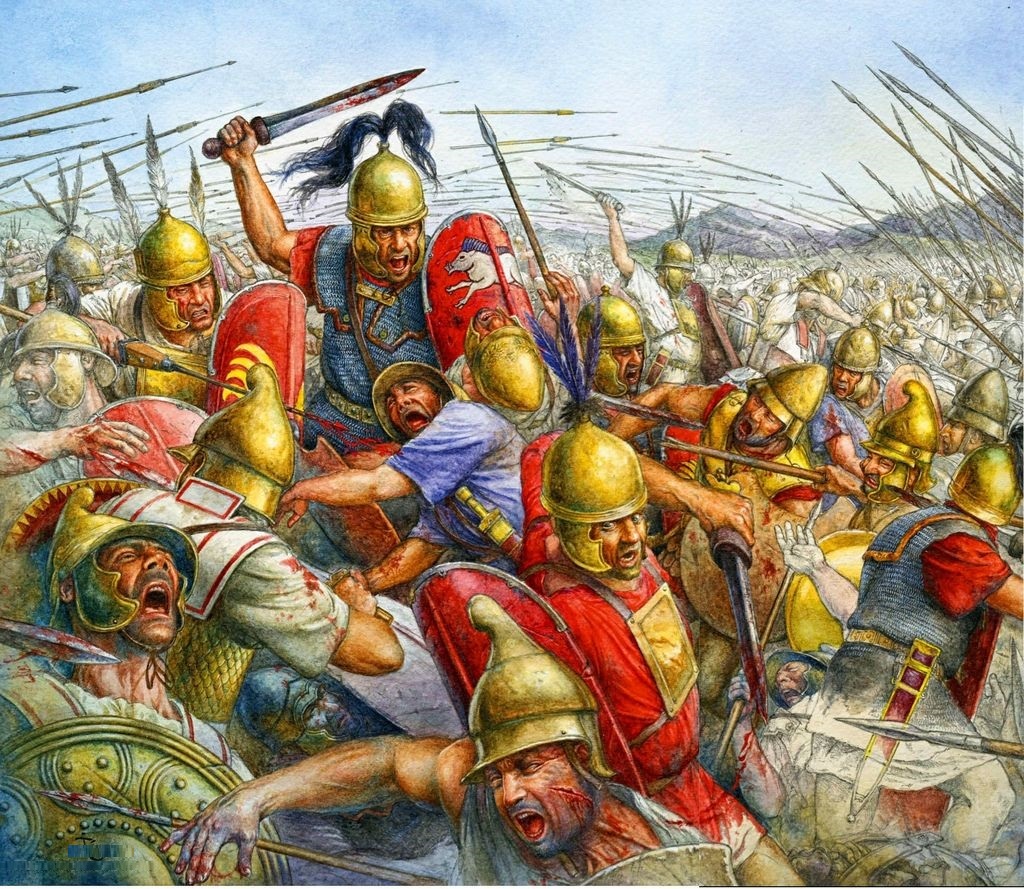
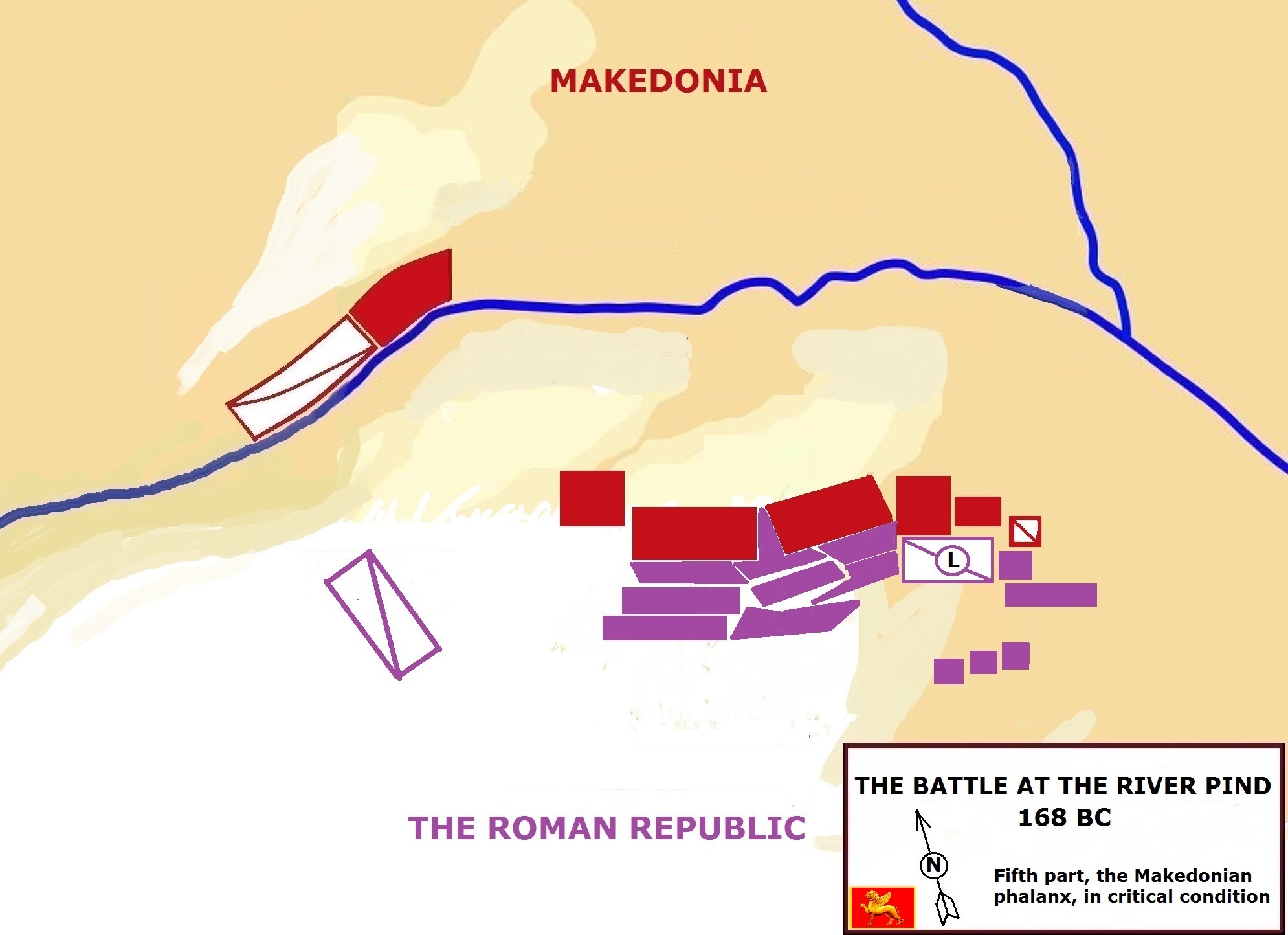
The Roman consul Lucho Amilis Paullus, seeing this, he ordered his soldiers to penetrate the gaps that had appeared in the phalanx, where their shorter and more controllable swords would gain an advantage in battle.
The Makedonian ruler Vadileos Berseos failed to see this danger, so with this failure of his he was doomed, the Makedonian military leaders on the battlefield did not follow the progress of the battle very well.

Coinage from the Roman Republic, after 197 BC, Roman cavalry, the Romans copied all the advanced military techniques, evidently copied the Makedonian cavalry, while the infantry was a copy of the "Libyan infantry" and its tactics
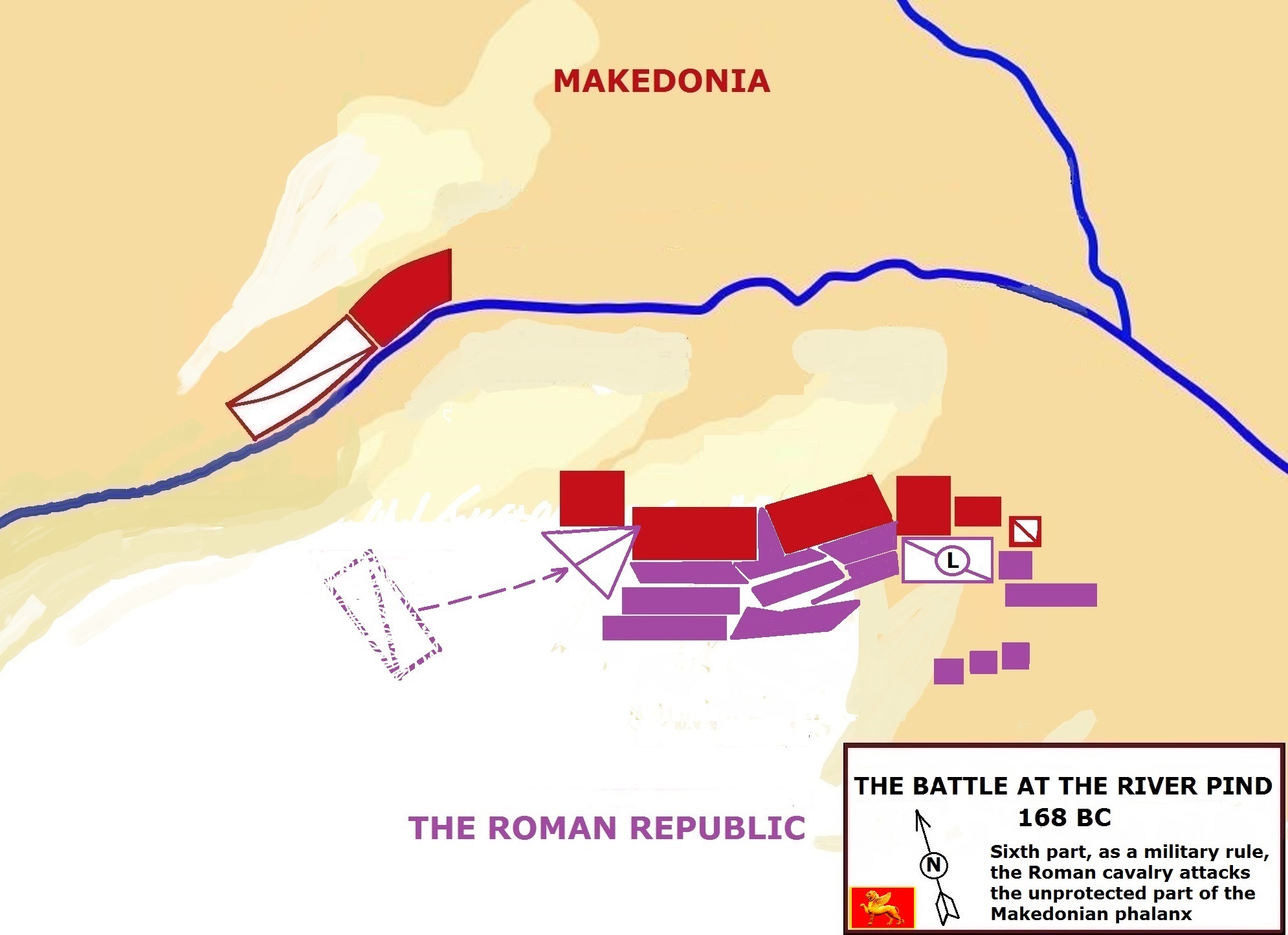
In spite of this, the Roman commander used a cavalry of 4,080 horsemen who were on the left flank and with them penetrated the Makedonian phalanx, left unprotected by the Makedonian ruler Vasileos Berseos, who was not on the battlefield and not only that, the "guards" - the cavalry on the left side - retreated with him, to protect the wounded ruler, probably Vasileos Berseos was not seriously wounded, here he made a disastrous tactical move, retreating, but the Makedonian right side did not move at all from its position, and exactly that part of the army was supposed to protect the infantry, the Makedonian commanders did not follow the progress very well of the battle, the possibility that they were angry with the ruler who left the battlefield is not excluded.
This fierce attack was launched against the Makedonian phalanx, which was now scattered, and the reorganized legions attacked the central point of the Makedonians.
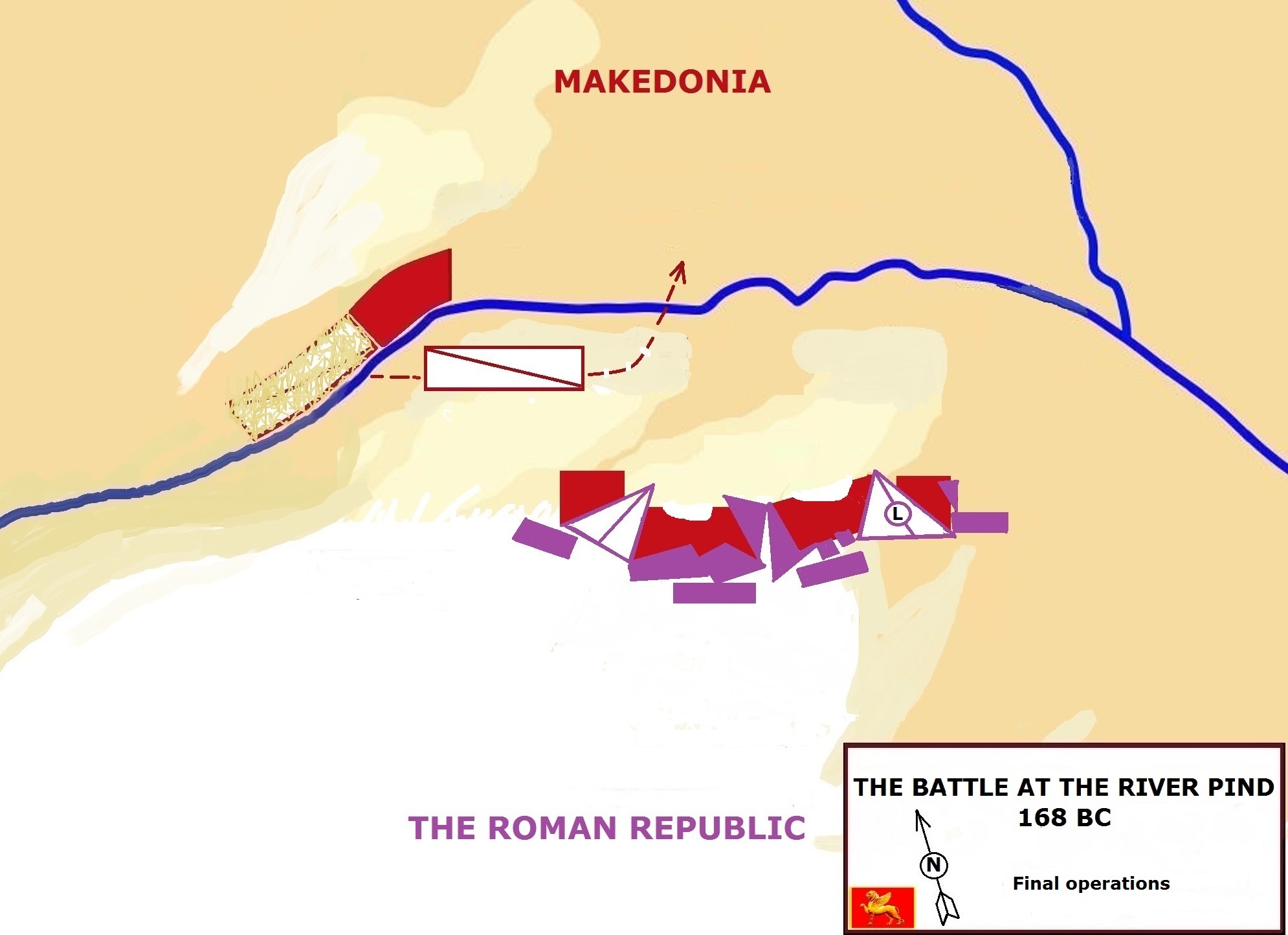
From this point in the battle, Lefkis Postumis Alvinos, the officer in charge of the second legion, attacked the right wing of the phalanx, while the commander himself, the Roman consul Lucho Amilius Paullus, who was at the head of the first legion, attacked the center. Elephants were also included here. With this strong attack, the Romans easily broke through the Makedonian lines and that unhindered due to the uneven terrain, the lack of coordination of the Makedonians, their heavier arsenal compared to the Romans, and also the fact that the Romans were better trained, the Roman consul Lucho Amilius Paullus used a skillful tactic, tired out the Makedonian soldiers, using the allies more directly at the beginning of the battle, but in the end it is evident that the Makedonian army was betrayed from the right wing, especially the cavalry. In this way the Makedonians were defeated despite the fact that they fought bravely until the end of the battle.
The only ones left untouched by the Makedonian army were those on the right wing, about 12,000 - 13,000, who did not take part in the fight. Makedonian forces suffered heavy losses. More than 30,000 victims and the remaining 11,000 were captured. The Roman army suffered much less, yet much more than the Romans themselves reported.
''Never were so many Makedonians killed by the Romans, as that day'' - Tito Livio.
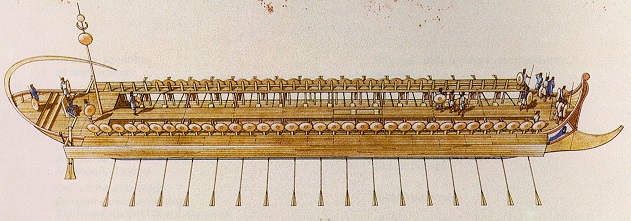
A Roman ship from the time of the Punic Wars - the war with Cartagena
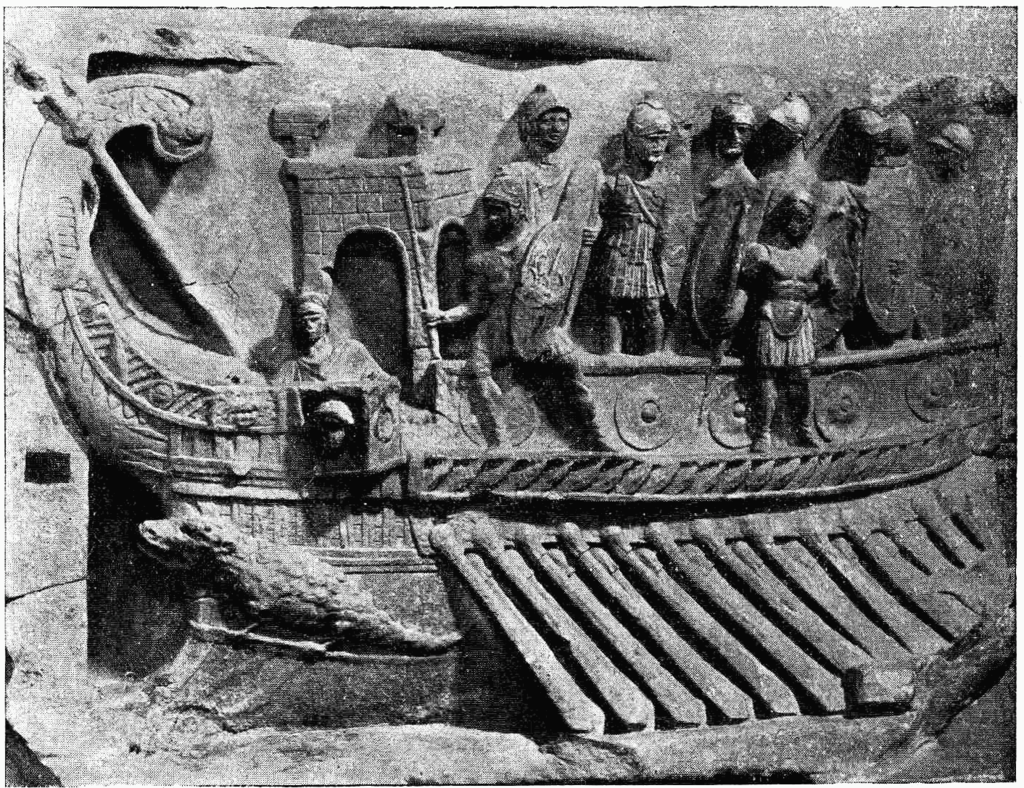
A Roman naval bireme depicted in a relief from the Temple of Fortuna Primigenia in Praeneste,[225] c. 120 BC;[226] now in the Museo Pio-Clementino in the Vatican Museums
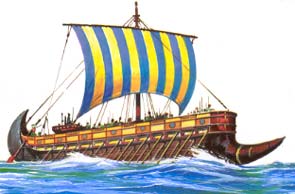
Roman Navy
The Roman ships were a copy of the Carthaginian ones, namely once they managed to capture a Carthaginian warship, then they dismantled it and copied it, plus the spoils of war - the Makedonian warships of Vasileos Philippoy The FIFTH
It is of interest to study some aspects of the battle in greater detail.
First, the withdrawal of the Romans after the first attack would mean that many Roman soldiers died.
The soldiers from the Makedonian phalanx hit the Romans directly in the face, so there was no room for insignificant wounds.
In a similar fight at Kynoskephalae, where the fighting tactics of the Makedonians were almost the same as at Pind, 700 - 2500 Roman soldiers were killed (the battle of Kalinik is ignored). On reflection, it can be concluded that in this aggressive attack and with a significantly larger army at Pind, the number of Roman soldiers killed must have been higher than this. If nothing else, the very fact that they retreated from battle supports this reasoning. If 700 Roman soldiers died at Kynoskephalae, in the battle of Pind, that number should be at least 1500 - 4000, twice as much. It is suggested that the Romans could not have escaped without suffering heavy losses.
This battle, however, was not an initial clash. There were other furious clashes when the Makedonian phalanx was broken through, and the Makedonians themselves certainly did not sit idly by, but continued to fight bravely.
The course of this battle raised many questions, and one of the most critical concerns the partial achievement (or partial effort) of the better Makedonian cavalry, which allowed the opponent to break up the phalanx without major difficulties. Later, at the decisive (critical) moment, when the fight was not tilted in their favor, the cavalry failed to restore the balance of the army to its original state with its intervention. The late intervention by the cavalry was doomed, and in this sense it can even be said that it was self-sacrificing.
The Makedonian ruler Vasileos Berseos, according to some sources, was called to answer for this mistake, because according to the same sources, his army was doomed to defeat even before the start of the fight and they write about the circumstances where the Makedonian army was able to bring the fight to their advantage and to defeat the Roman army.
It is possible that more political motives are hidden behind this catastrophic recklessness, carelessness, carelessness, negligence of the Makedonian cavalry. The riders in the cavalry were sons of Makedonian aristocratic families, who were dissatisfied with the Makedonian ruler Vasileos Berseos, because of his political approaches and affection for the people. The concentration of a large infantry force, composed of ordinary citizens, gives some clues to the feelings of Vasileos Berseos towards the people. This may have been a correct military tactic against the Romans, but this solution led the ruler to conflicts with people of his rank.
According to the above, it can be concluded with high probability that there was a conspiracy against the ruler, which was revealed during the critical stages of this dramatic conflict.
The war with the Romans had an intense political dimension and ethnic nature. The oligarchs of the Makedonian state, as well as the Makedonian aristocrats, joined the side of the Romans in order to preserve their wealth and privileges. So they aimed to preserve their benefits as a nation, this Roman tactic led them to conquer Makedonia with only 4 Roman legions - 20,000 soldiers and even more dissatisfied and angry neighbors who later fell under Roman slavery.
On the other hand, the poor people bravely stood on their feet and fought until the end, and that is the reason for the great mortality of the Makedonian army. This line of thinking is supported by the fact that the cavalry deserted their ruler Berseos.
The Makedonian ruler Berseos made primarily 3 mistakes:
- 1 should have mobilized more troops, the Romans took about 150,000 Makedonians into slavery, so there was no shortage of people,
- 2 he had to hire the Scythian mercenaries even though they demanded double wages,
- 3 was very careless on the battlefield.
The Makedonian ruler Vasileos Berseos was betrayed and left at the mercy of the Romans by the Makedonian nobles after the battle at Pind and together with his family, frightened, tried to escape to the island of Kydon, with the help of a Kydonian ship, but was exposed by the Kydonians and they robbed him, they stole all the gold he was carrying, including a gold plate that belonged to the Makedonian ruler Vasileon Makedonon Alexandroy.
The Makedonian ruler was betrayed by the leading class in his country of Makedonia and left to be defeated, with disastrous consequences for his country of Makedonia as well as for his entire Makedonian people.
After some time he was betrayed again, and thus was captured by the victorious Roman Amilius Paullus.
The purple (Makedonian Monarchy) was then abolished. The Makedonian ruler Vasileos Berseos was betrayed by the Makedonian nobles and together with his family was sent by the Romans to Rome and was presented in a yoke of oxen, the Makedonian cities were looted, the wealth was transferred to Rome and divided among the allies, and Makedonia was divided into four autonomous republics.
According to the testimony of ancient historians (Polybias, XXXVII 16; Livy XLV 42), the Makedonian ruler Vasileos Berseos, after experiencing a humiliating triumph in Rome, was deported to Fuchens Alba, where he died two years later.
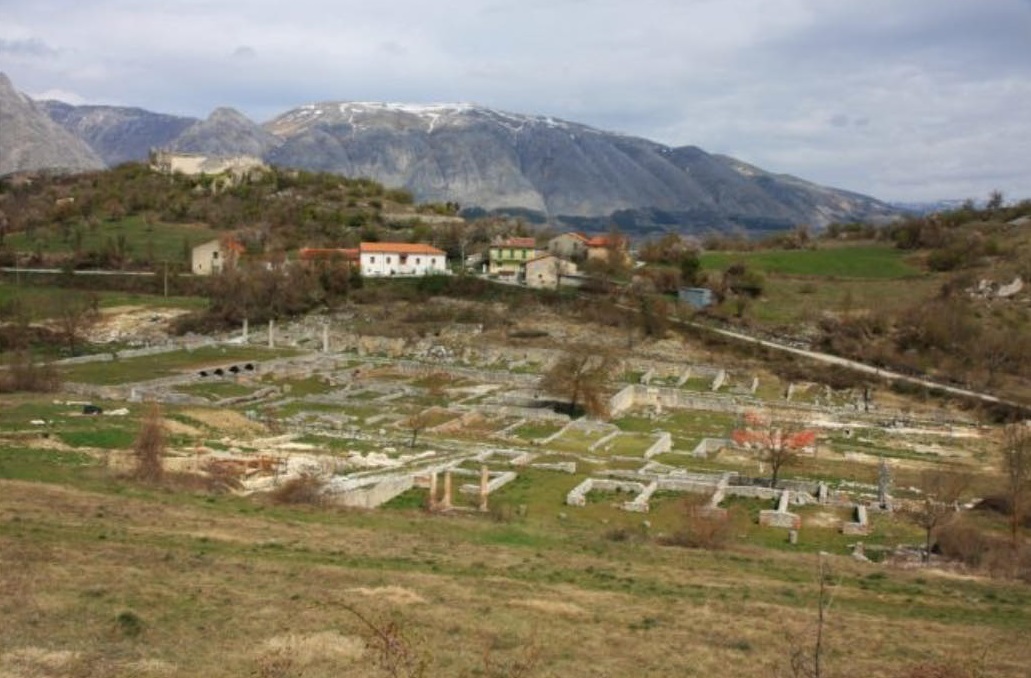
Remains of Alba Fuchens, today central Italy
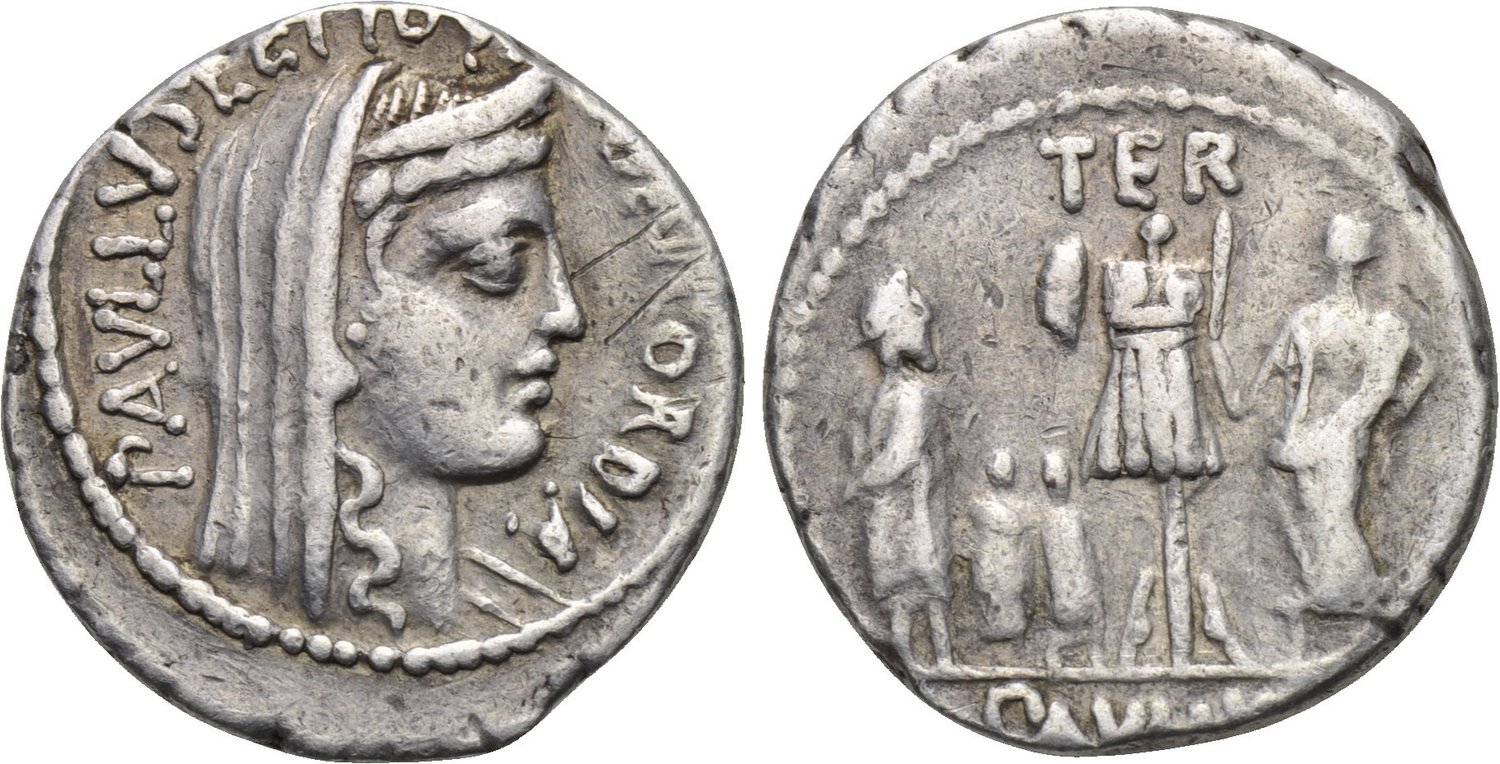
Roman coin, the Roman consul in honor of the triumph in Rome and the humiliation of the Makedonian ruler Vasileos Berseos
Livy tells us the story according to which:
''When asked by the consul Paullus Lucho Amilius, who demanded an answer from the defeated Makedonian ruler, to say publicly, what was the reason that prompted him to start a war against Rome,... Berseos, kept silent and cried''.
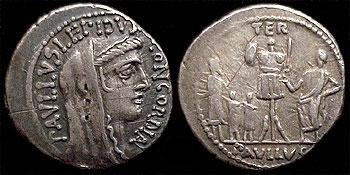
Roman coinage, the Roman consul Lucho Amilius Paullus - "The Macedonian" (after the victory over Makedonia) brings as a trophy the Makedonian ruler Vasileos Berseos and his family, captured in Rome.
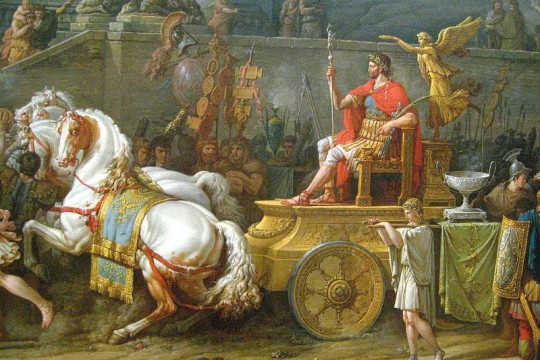
The Triumph of Lucho Amilius Paullus - "The Macedonian", a later work of art
Upon the news of the defeat of the Makedonian ruler Vasiloes Berseos at Pind, the Roman consul received golden wreaths from the Makedonian "nobles" as a sign of acceptance of the defeat.
The battle of Pindus was very significant because it meant defeat for Makedonia. Makedonia is subjugated by the Roman Republic, which was then considered the undisputed "ruler of the world".

Roman coin, the Roman consul Lucho Amilius Paullus brings as a trophy captives in Rome, the Makedonian ruler Vasileos Berseos and his family
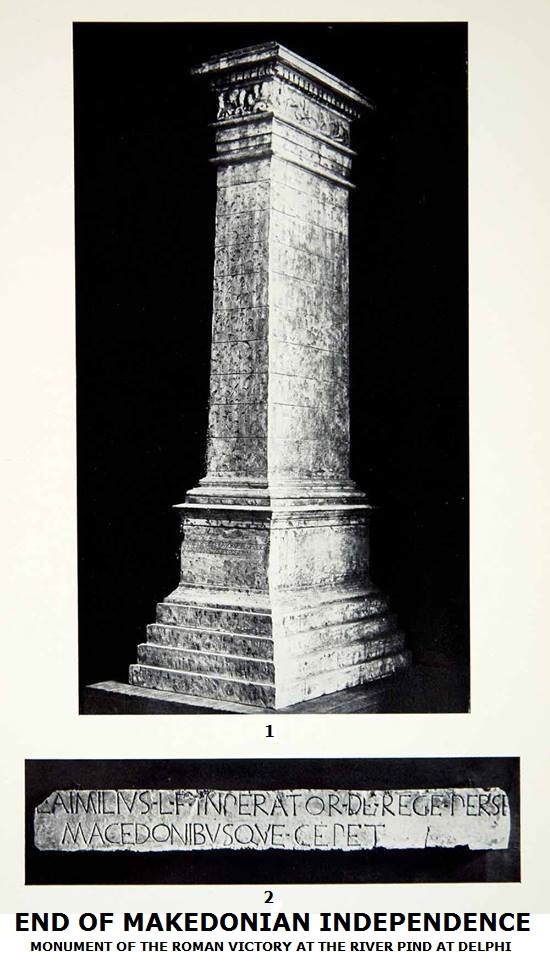
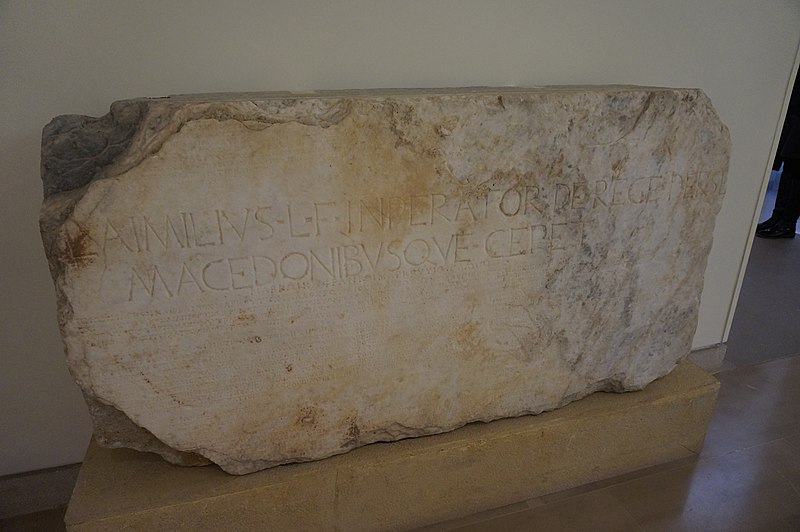
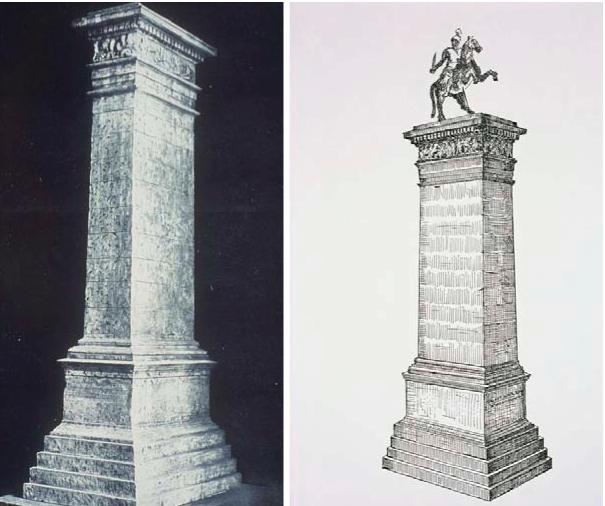
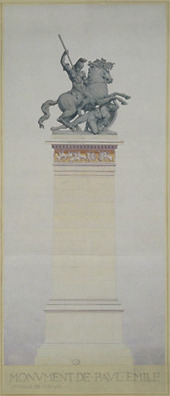
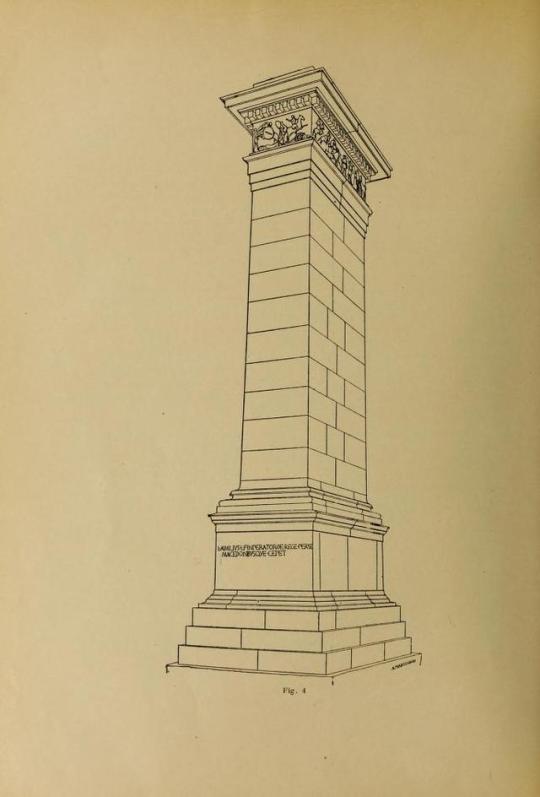
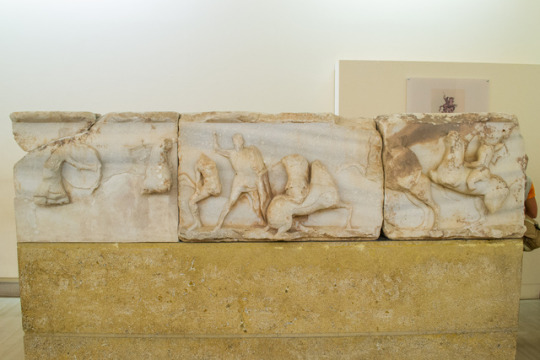

The Triumph of Lucho Amilius Paullus - "The Macedonian", a later work of art
The third Makedonian-Roman war was a decisive conflict between the Makedonians and the Romans.
When the Makedonians realized what a tragic path lay ahead of them, they joined together in a struggle with a common goal, a struggle of pure national character. No success though. They failed to unite a broad alliance of armies that could counter the enormous and powerful army possessed by the then Roman Republic, yet that is the "success" of all military leaders from any era.
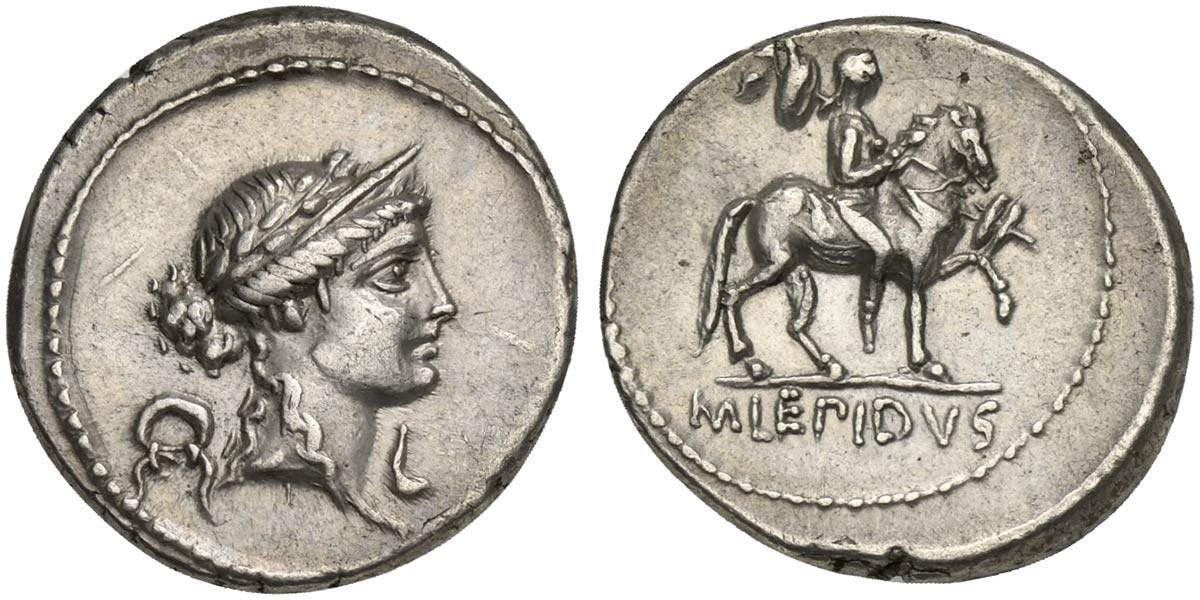 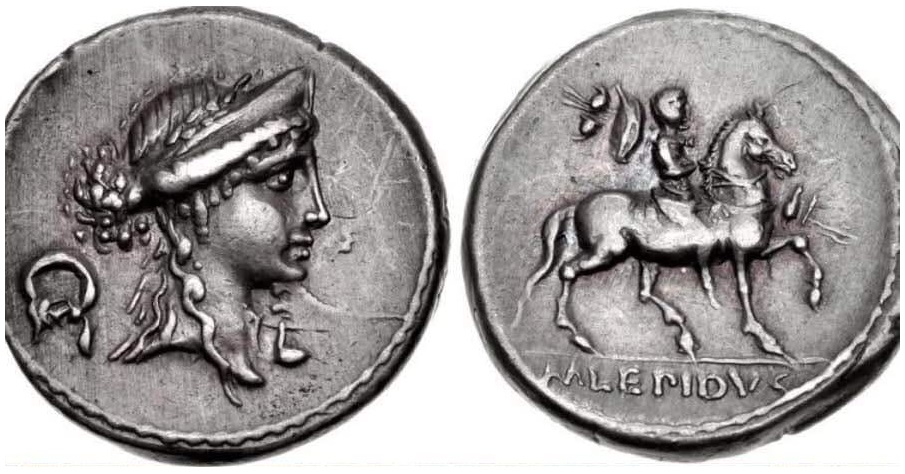
Roman coin 50 BC from Octavian dedicated to the Roman consul Lucho Amilius Paullus Lapidas - triumph, it is evident that the Roman tyrant Octavian did not like the Makedonians because they probably supported Pompey his rival, he wanted to "remind" them, definitely Octavian - a villain
In June 2005, the tomb of the Makedonian ruler Vasileos Berseos was found along the road "Via Valeria" near Moliano De Marsi (Aquila) by representatives of the Italian Ministry of Culture and a Makedonian archaeological delegation.
There are no Romans today.

Copyright © Makedonia is ALL ☼ MAKEDONIAeSE.com ☼ All rights reserved
Copyright ©
Makedonia is ALL ☼ MAKEDONIAeSE.com ☼ All rights reserved
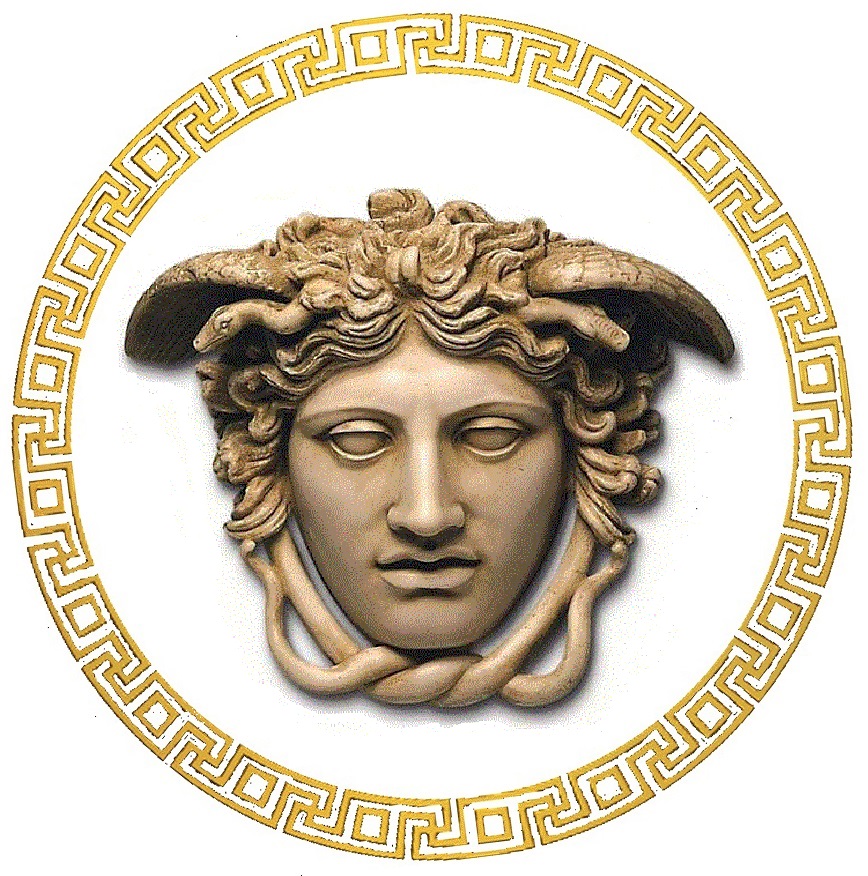

  
Vasileon
Makedonon Alexandroy gave it the world to the
Makedonians, and they how returned it to him,.. they
poisoned him, destroyed his family,... and
today instead Makedonon (he is the
Makedon) erase
his real name call
it ''veliki'' or ''the great'', while
the state of Latin they
call it ''Мacedonia- Matzedonia'' - name
that foreigners have given them, and
they do not understand it and do not
understand it ,.. and
yes I
would forget,... they permit someone else to choose her name of the state.
Will
anyone be found to "fix" things?
'' ,.. THE
LION'S SKIN OF BLOOD, IT WILL BE ROTTEN
BY BLOOD AND WILL BE DO IT IN PIECES.
HOW
MANY GIANTS, THEY WILL BE MADE BY SELFE DWARFS, SO
MANY THIEVES, WHAT
THEY WILL STOLE AND
THEY WILL SPOIL IT THE
LION'S SKIN.
EVERYONE
WILL WANTED HER, EVERYONE WILL SHE HER CRUSHED IT, A STUPID FROM BIRTH WILL
DEMAND IT FOR HER.
THE
PURPLE WILL RIP AND MAKE A DIRTY OF BLOOD AND
MUD.
A SHAMELESS ARMY WILL CRUSHED IT THE CULTURED
MAN AND
WOMAN FOR SHAME.
TO THE THE POPE WILL BE GIVEN THE PURPLE FOR
LYING.
THE CHILDREN OF THE WOMAN WILL BE KILL AND
WILL BE GRILLED.
THE
SON OF THE MOON WILL LAUGH AND THEY WILL LAUGH
NEXT TO HIM.
THEY
WILL PRAY AND CRY, WITH
HIS FATHER'S KNIFE, WHAT
IS LEFT FOR HIM, WILL
WAVE IN THE DARKNESS.
THIRTY
AND SEVEN DAYS WILL PASS WHEN
THE MOON VISION WILL BE EXTINGUISHED AND THE PURPLE WHO PASSED THE
BLUE SEEN IN THE SKY, WILL RETURN AND HE WILL THRONE FOR THE
CENTURY.
ROTTEN BY FIRE, THE CHILDREN OF THE GREAT MOTHER (
THE CHILDREN OF THE WOMAN), THEY
WILL CLEAN THE SICK WIND.
WHY
1000 YEARS ARE LIKE YESTERDAY. HERE
ARE THE SAME REPETITIONS OF THE TIME PASSING,
AND REMAIN YOU, LIKE PHOENIX REPEATED FROM ASH, AS SPIRIT AND AS REASON TRUE IN THE DISTANCE....''
|

On day
03 / Ma / 2009, is constructed the web page
of Makedonia is ALL: http://www.makedonijaese.com/.
That day is considered the organization's birthday of Makedonia is ALL.
On day 16 / Dzustar / 2016, is constructed the reserve web page
of Makedonia is ALL : http://www.makedoniaese.com/.

And at the beginning of construction of the web page
of Makedonia is ALL, because it talks about the True History of Makedonia with historical facts, but also current political events, BECOME A THORN in the eyes of all the enemies of the Makedonian State, but also a thorn in the eyes of some political organizations in Makedonia.
The web page of Makedonia is ALL, was constructed as a result for the needs of the Makedonian People and others to become familiar with the True Makedonian History, politics and the painful Makedonian issue.
The web page of Makedonia is ALL, is constructed to help preserve Makedonian identity, country, culture, language, right to free speech, thought, movement, coexistence with other national minorities in Macedonia, free expression and encouragement of expression BUTH and nurturing of national identity both in Macedonia and in the world.
|

ГАСНУВА
- АЛЕКСАНДАР
МАКЕДОНСКИ

Наскоро, ПОСЛЕ ПОВЕЌЕ ОД 2200 ГОДИНИ ЌЕ ИМАТЕ МОЖНОСТ ДА ГО ИМАТЕ МАКЕДОНСКОТО СОНЦЕ НА ФИЛИП МАКЕДОНСКИ, СО ПРАВИЛЕН ОБЛИК И ЛИК, ЦЕЛОСНО ИЗРАБОТЕНО ОД УМЕТНИЦИТЕ НА МАКЕДОНИЈА Е СЕ
|
THE MAKEDONIAN
SUN OF THE MAKEDONIAN VASILEOS PHILIPPOY MAKEDONON
Македонија
е СЕ, се
залага за
нова химна: ''
Земјa Mакедонскa''
|

 
НИЕ СЕ
ДЕФИНИРАМЕ
КАКО
ЉУБИТЕЛИ НА
СЛОБОДАТА
ЗА НАС
МАКЕДОНИЈА Е
СЛОБОДАТА
АКО ИМА
МАКЕДОНИЈА
ЗА НАС
ИМА И СЛОБОДА
Копираит © Македонија е СЕ ☼ MAKEDONIAeSE.com ☼ Сите Права Задржани
Македонија е СЕ ☼ Партија на Народот на Слободата ☼ МС ПНС
Историја на Македонија
МАКЕДОН ИЈА
ΜΑΚΕΔΟΝΙΑ
MAKEDONIA
BACИЛEOH
   МАКЕДОНОН
МАКЕДОНОН

АЛEКCAHДРОЈ
Македонско Име вечно нема да загине.
Глава даваме, Македонија и Mакедонско име не даваме.
Од Македонија и Алекcандрoj Македонон, славeн Василeoн Македон нема да се откажеме.
Cлава македонска ќе повратиме,
Алекcандрoj Македонон славен Василeoн Македон обожaваме,
Македонија, земја нај мила уважуваме.
Малку сме на број, ЕЈ, ХЕЈ,
силни сме во бој, ЕЈ, ХЕЈ.
ЕЈ, Алекcандрoj, OJ, OJ,
ЕЈ, Македонон, OH, OH.
Алекcандрoj Македонон славен Василeoн Македон, нас не предводи.
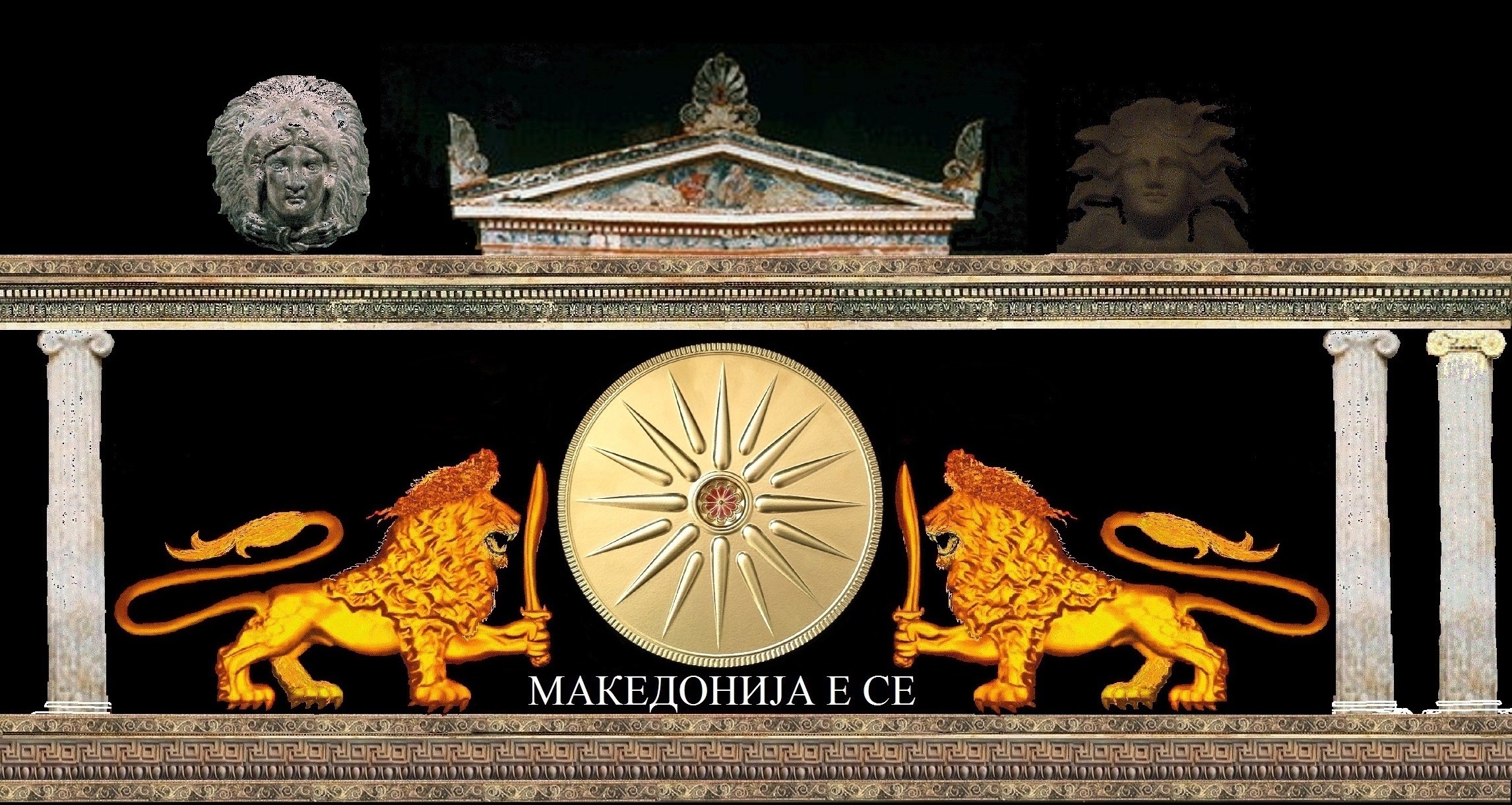
|
|
|


